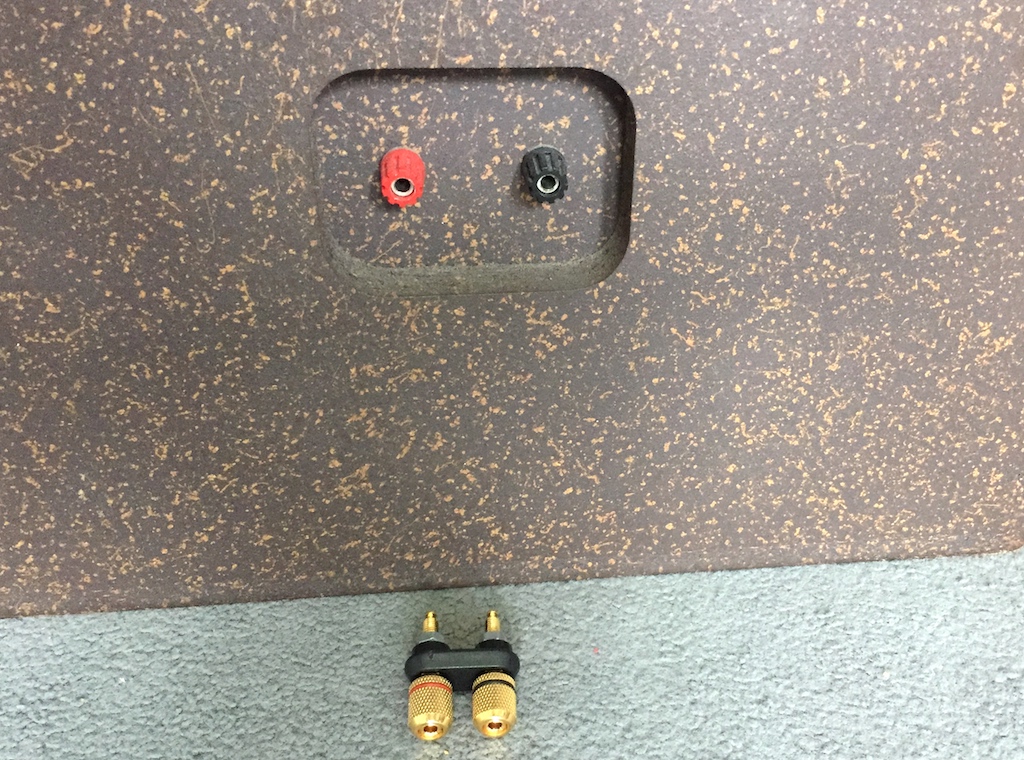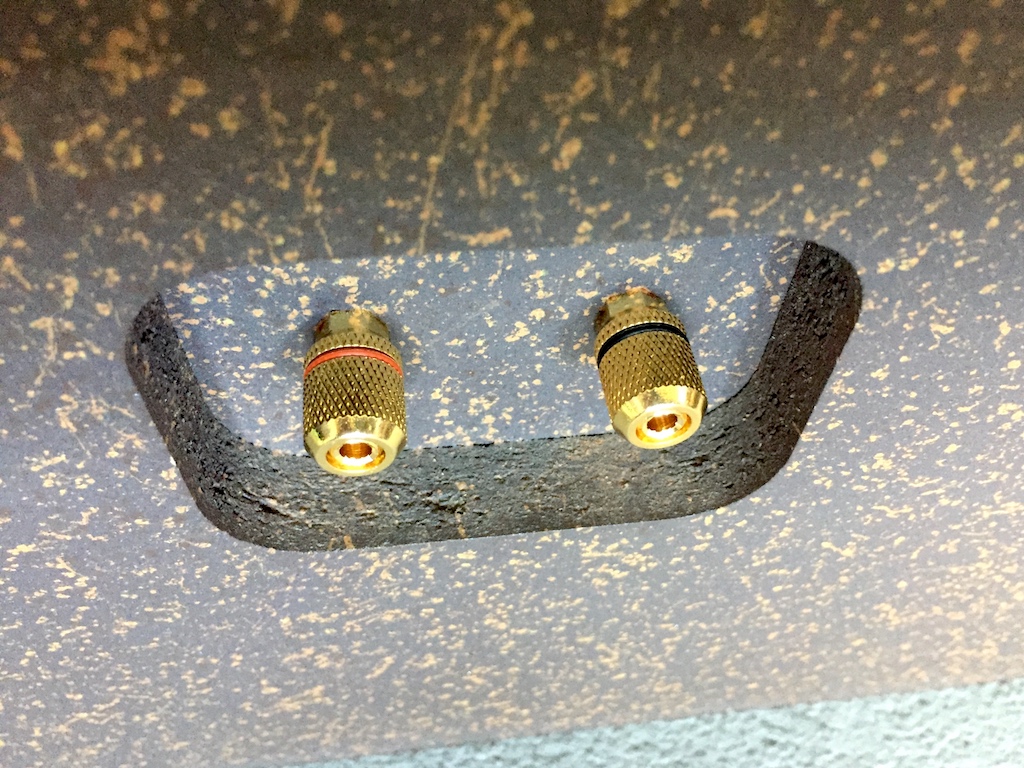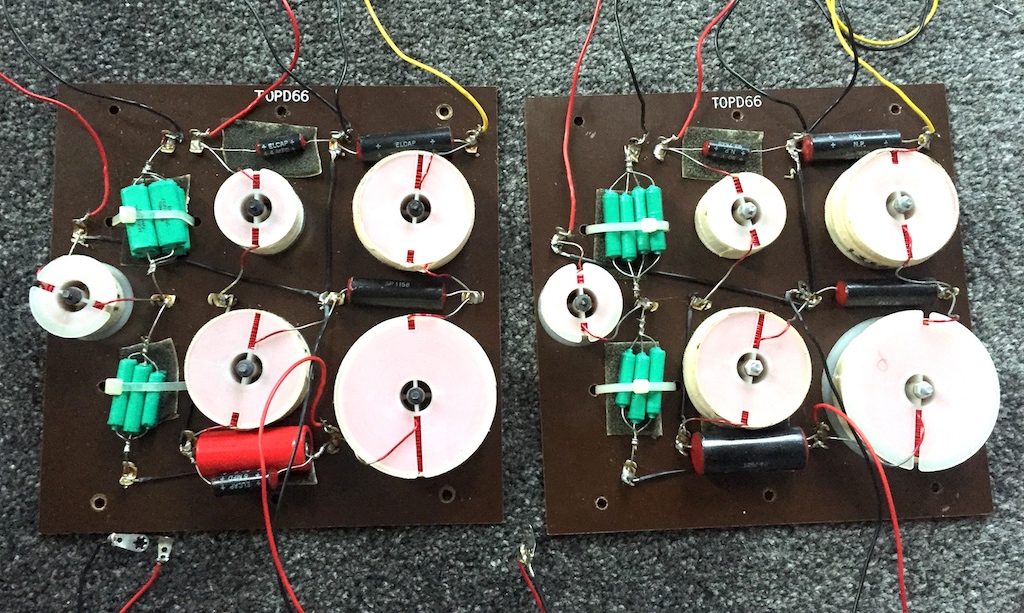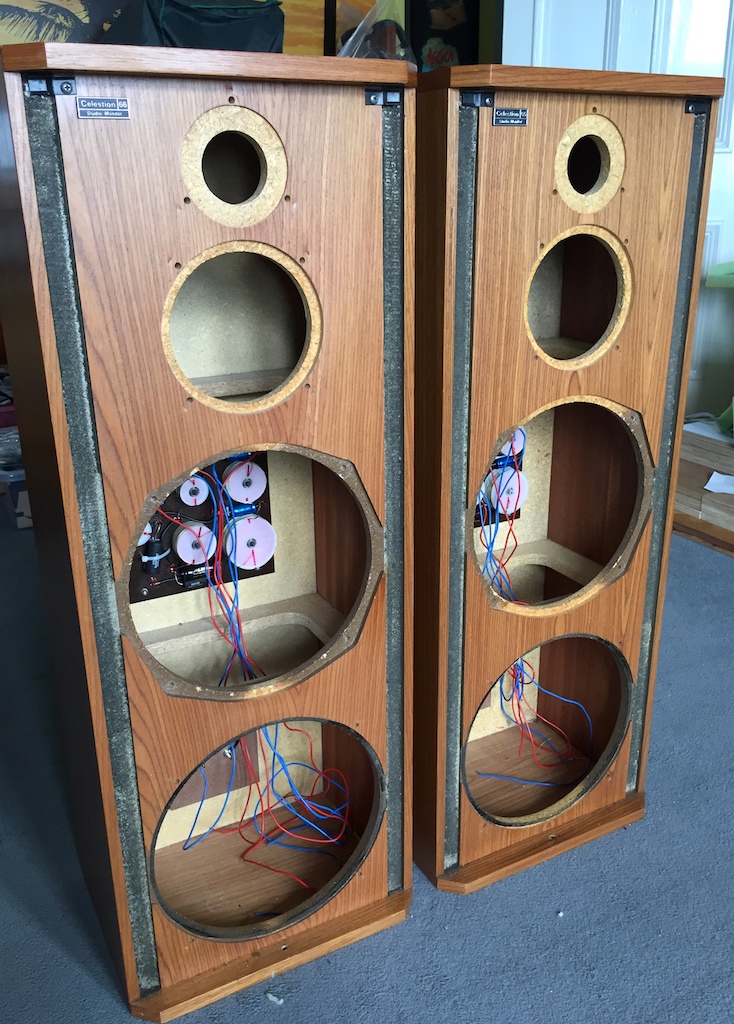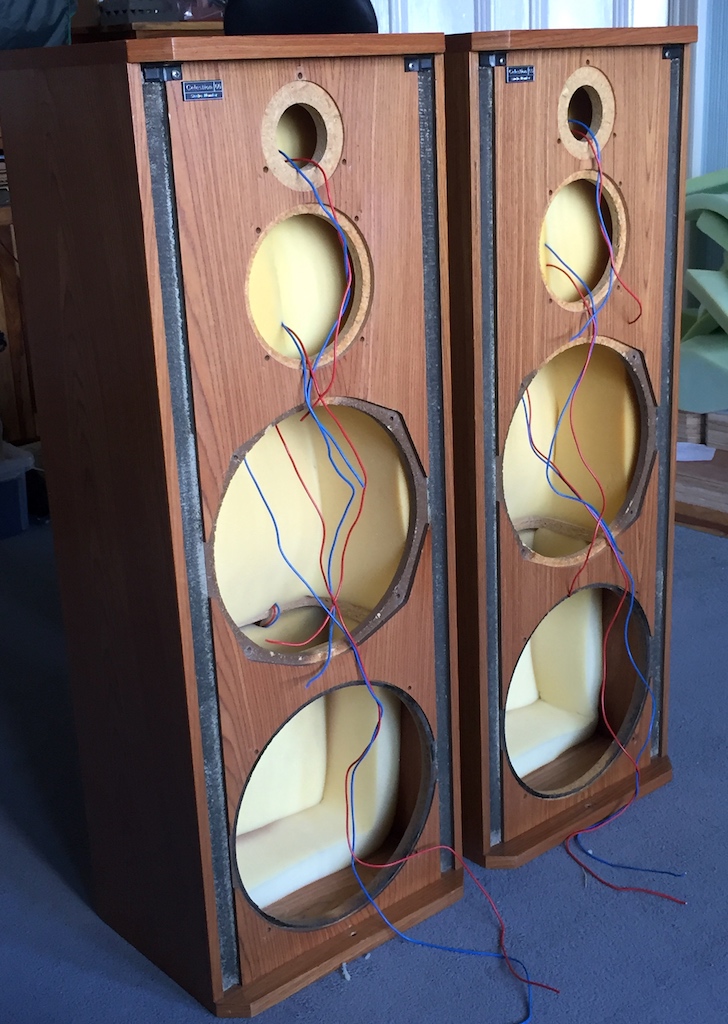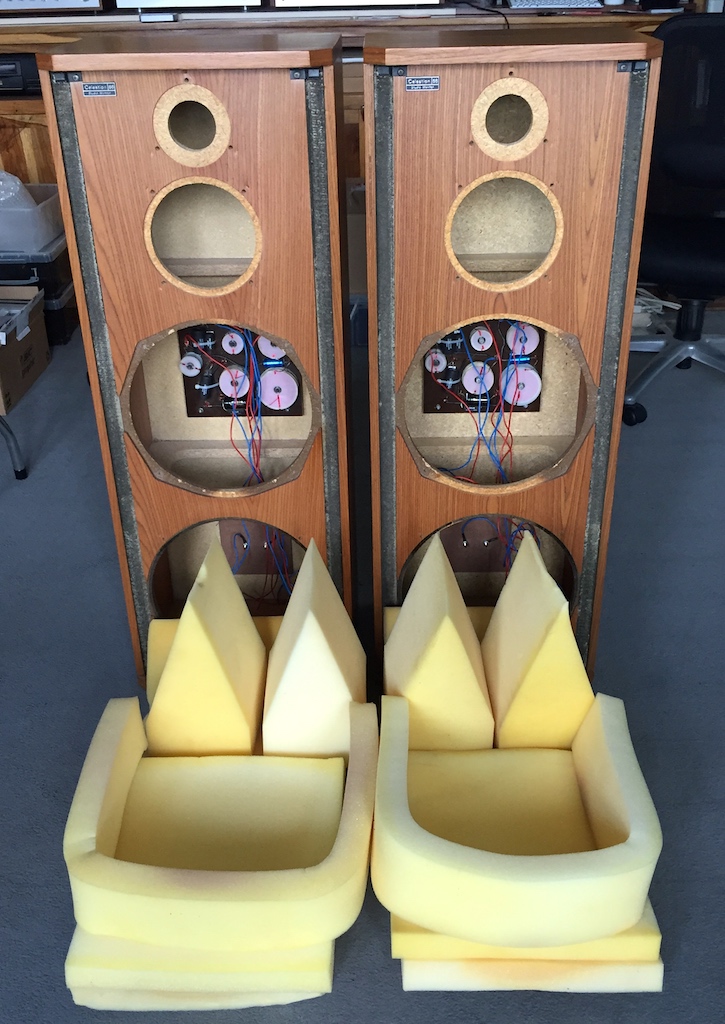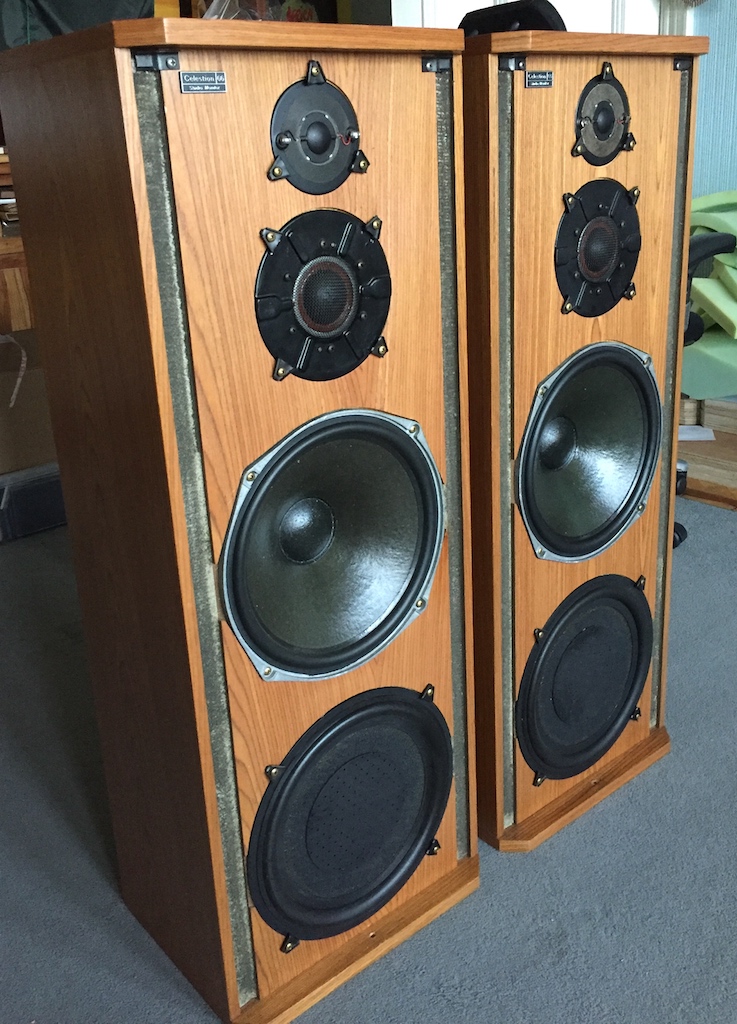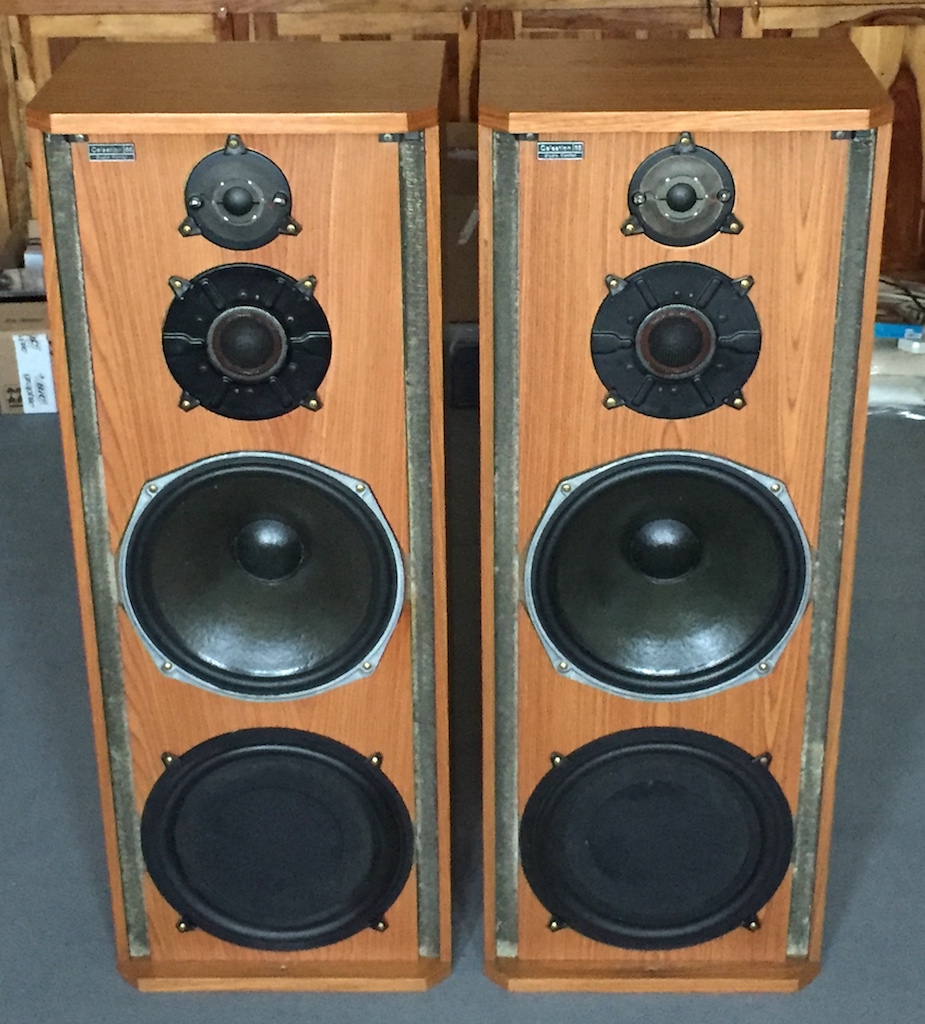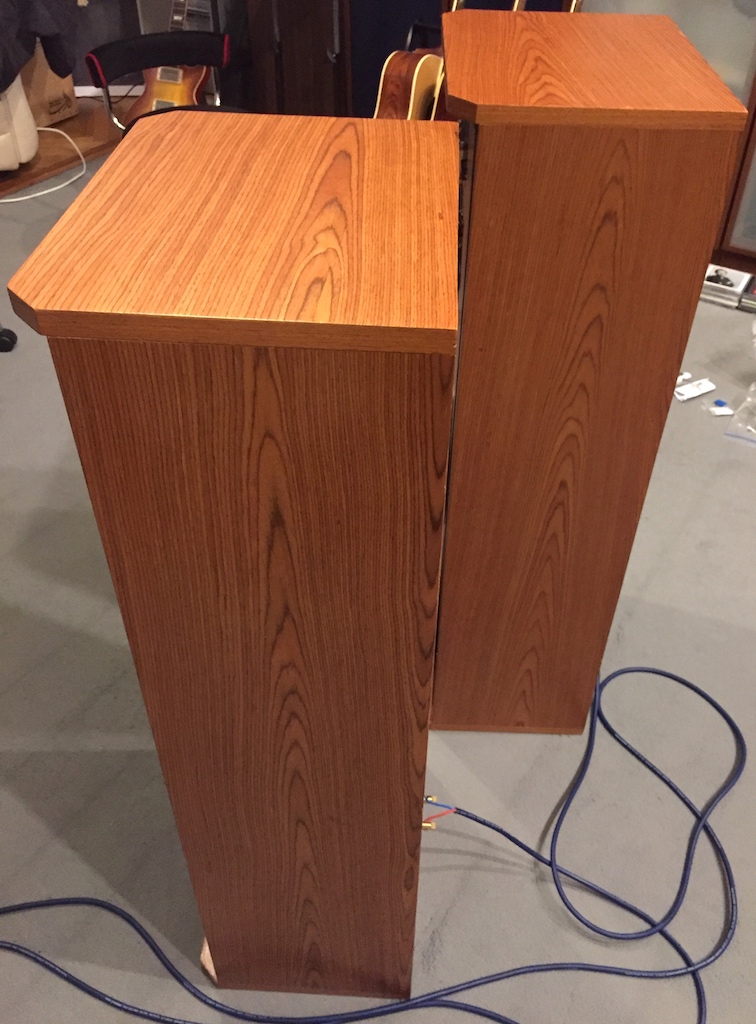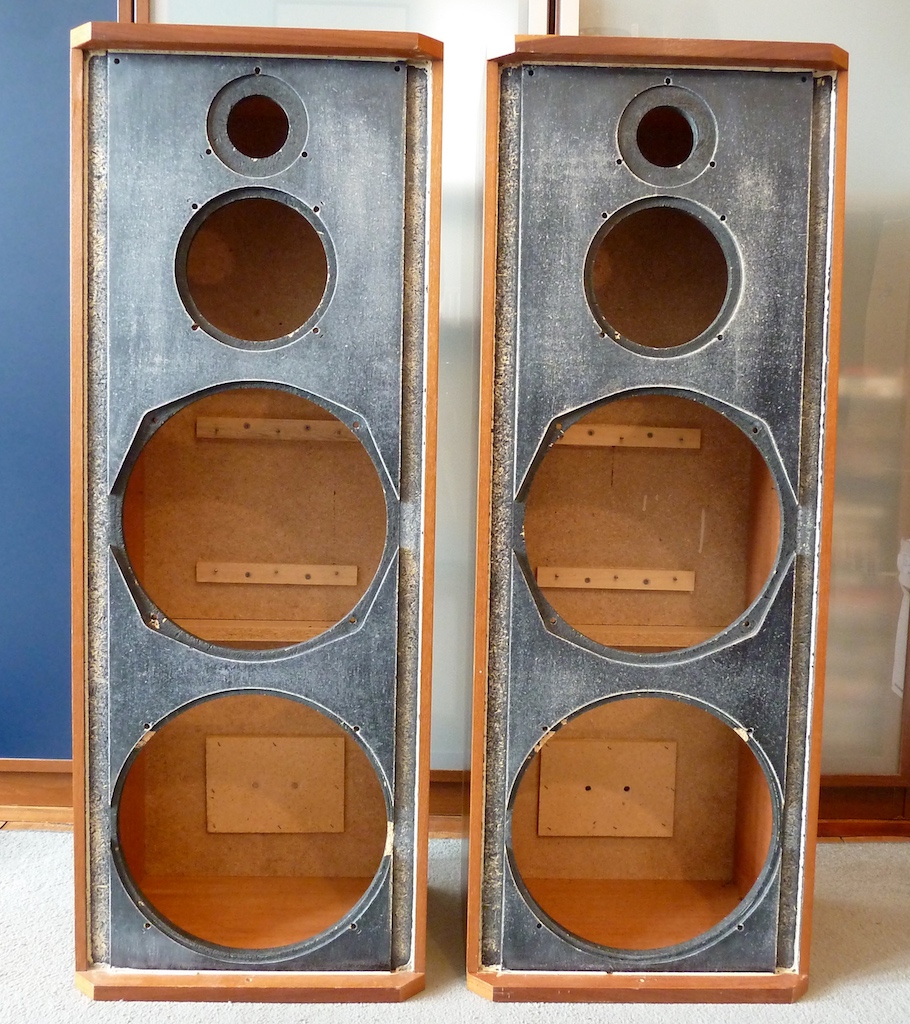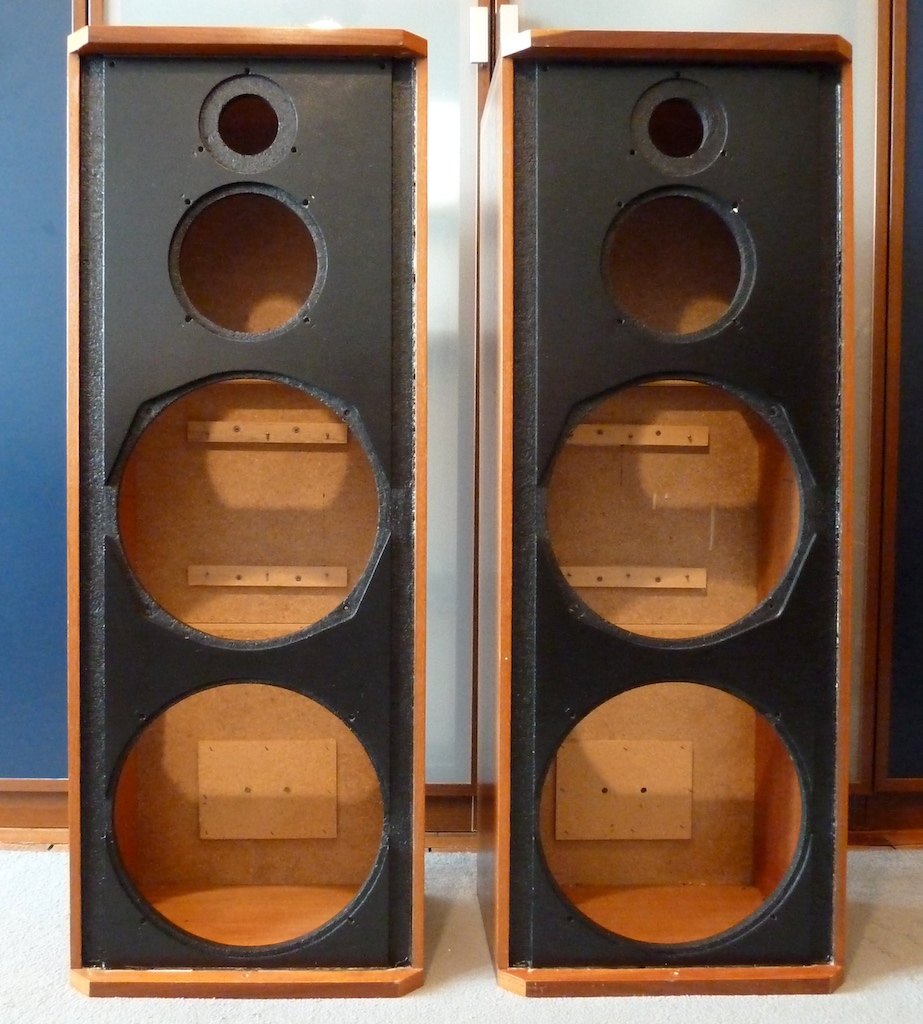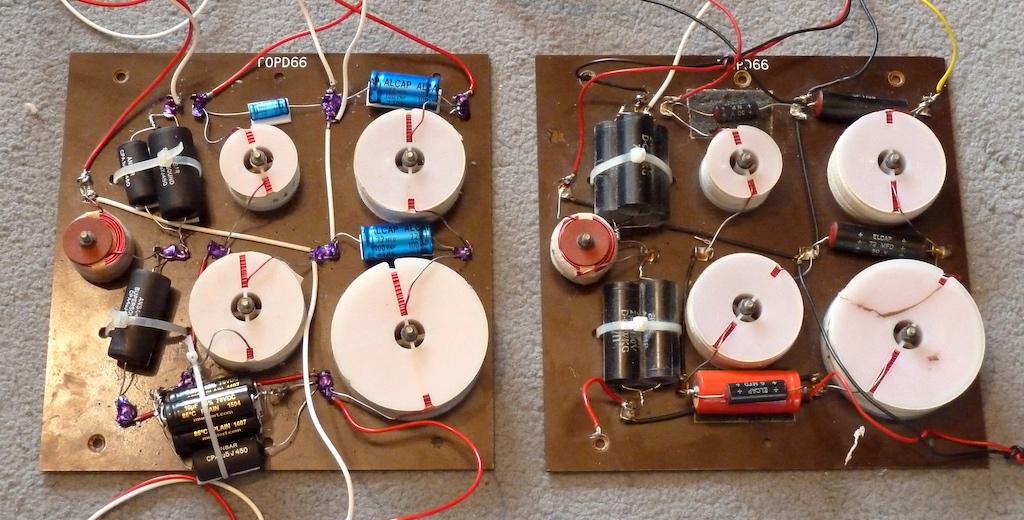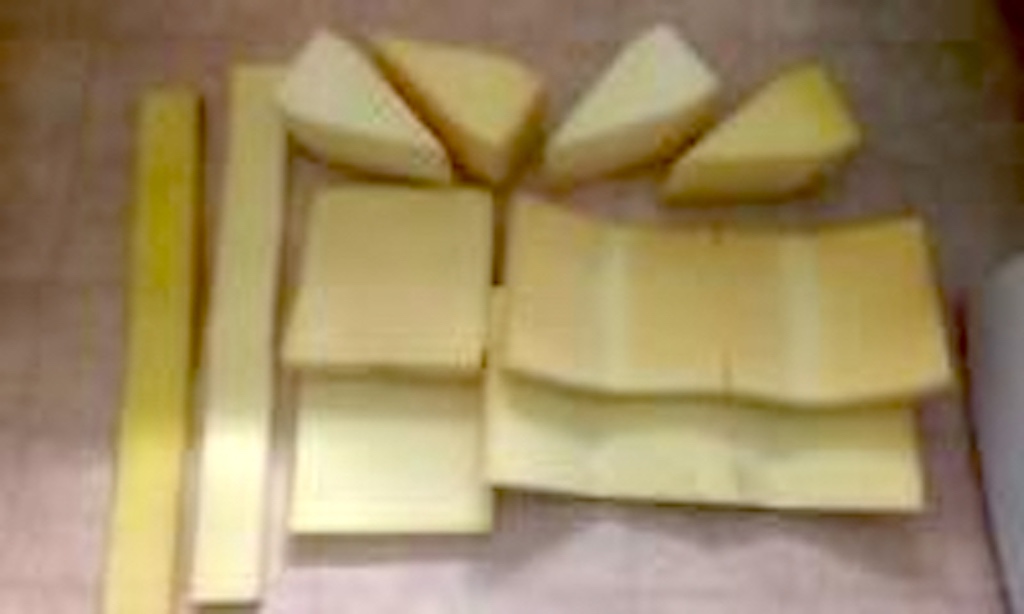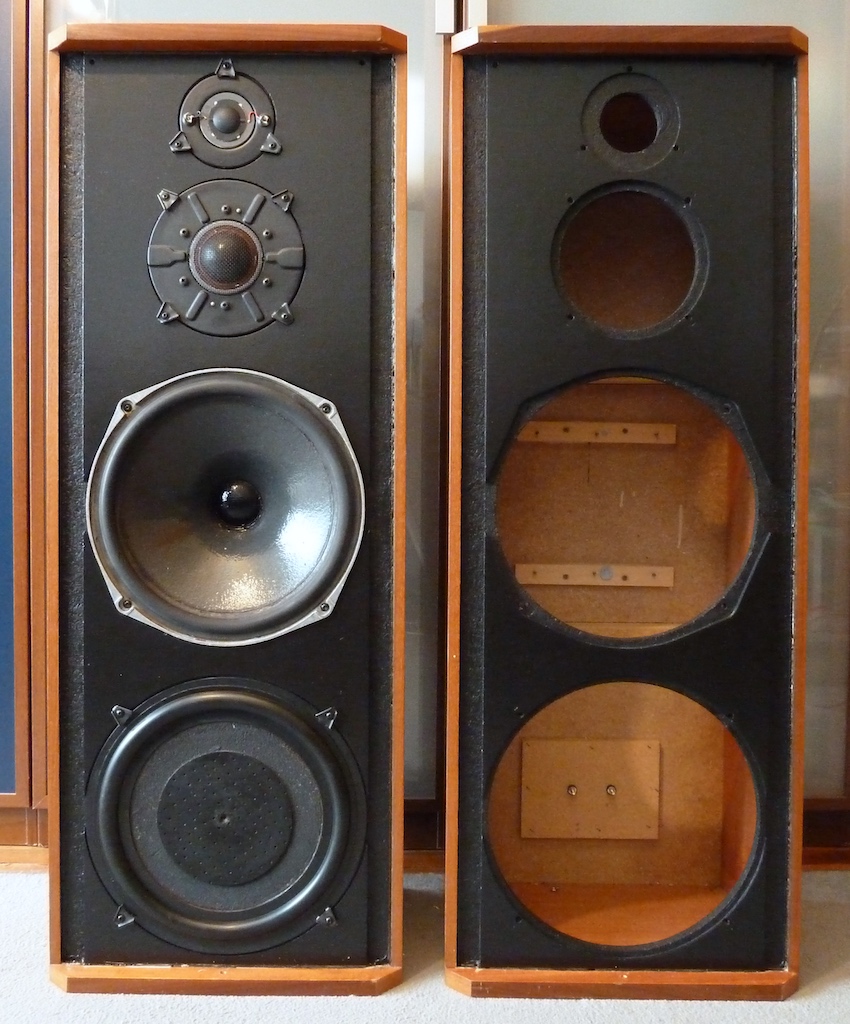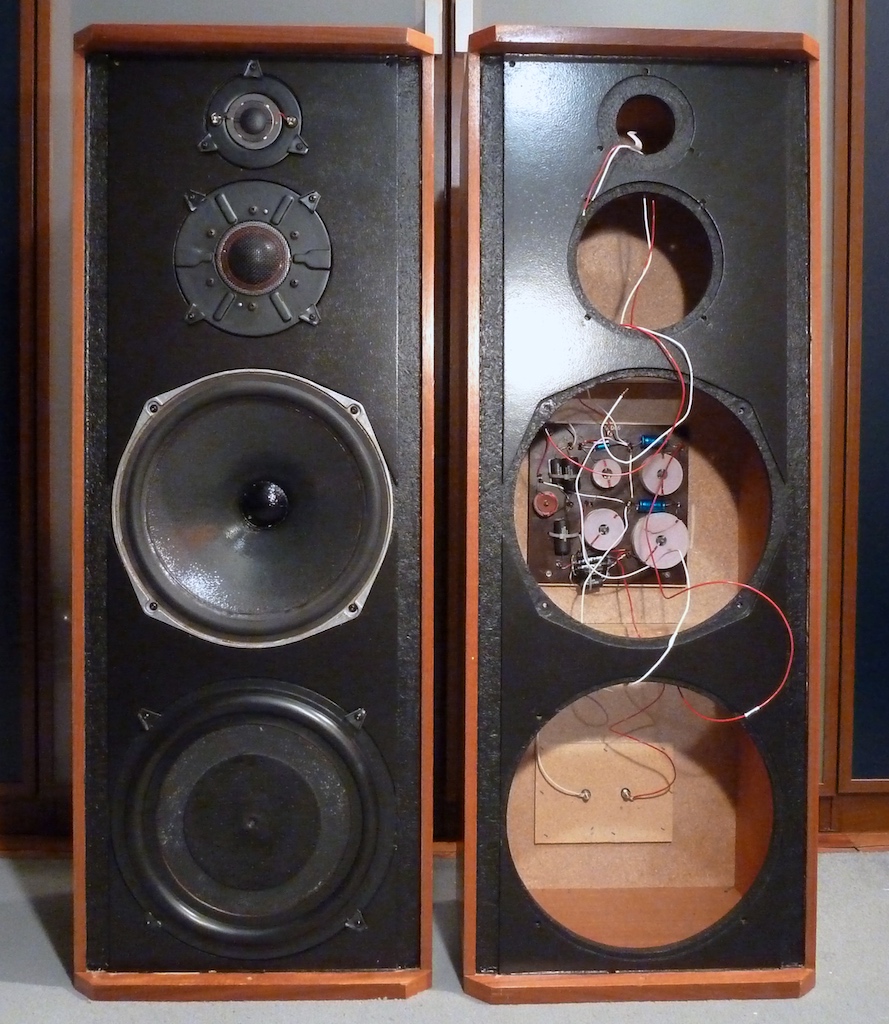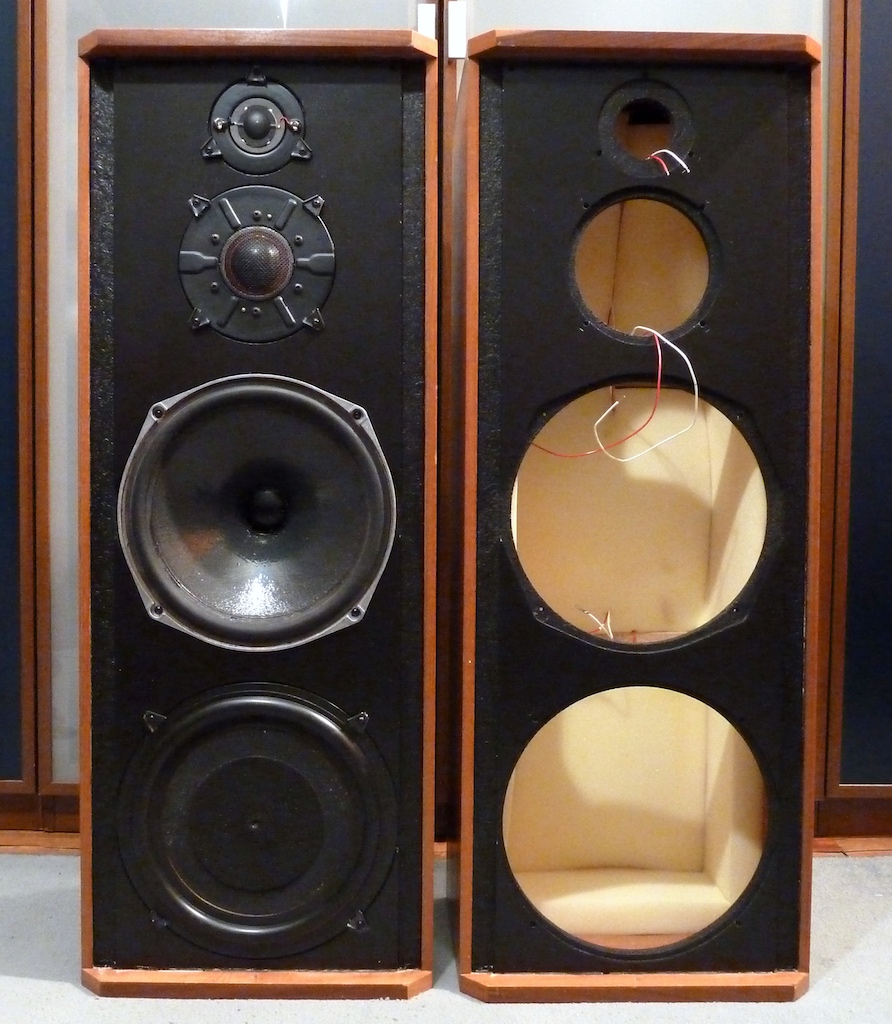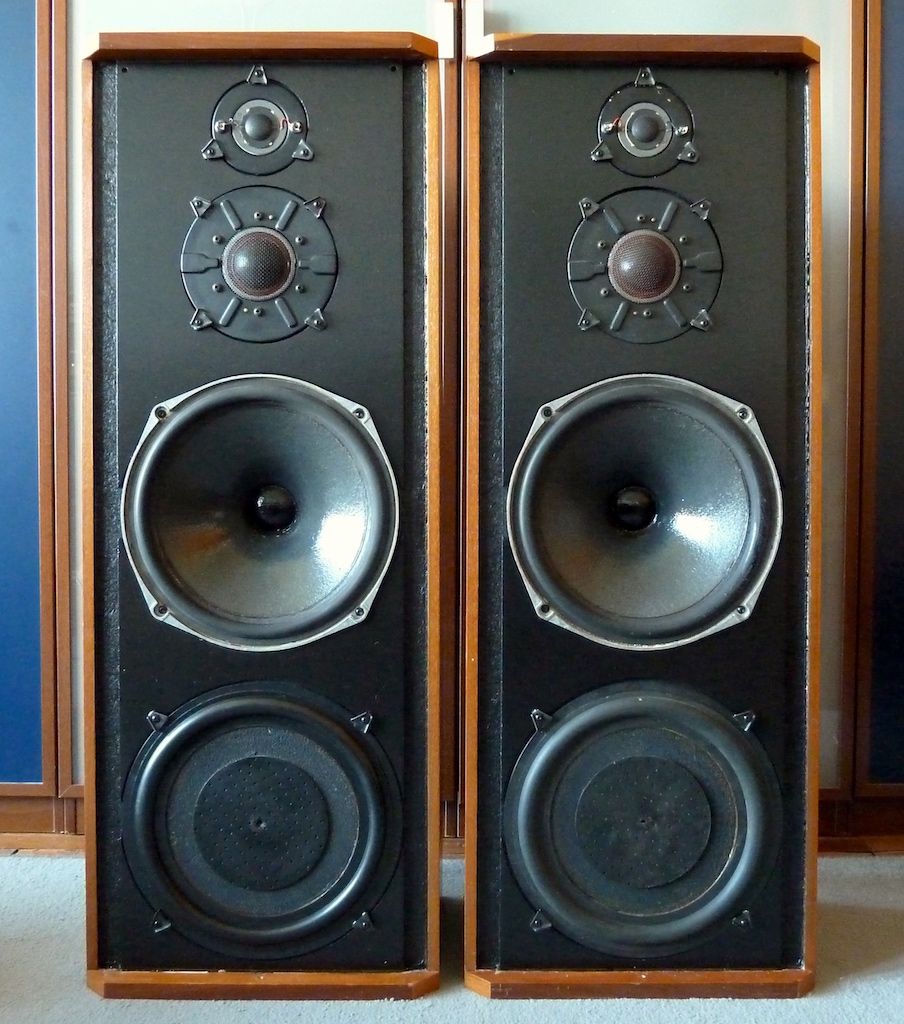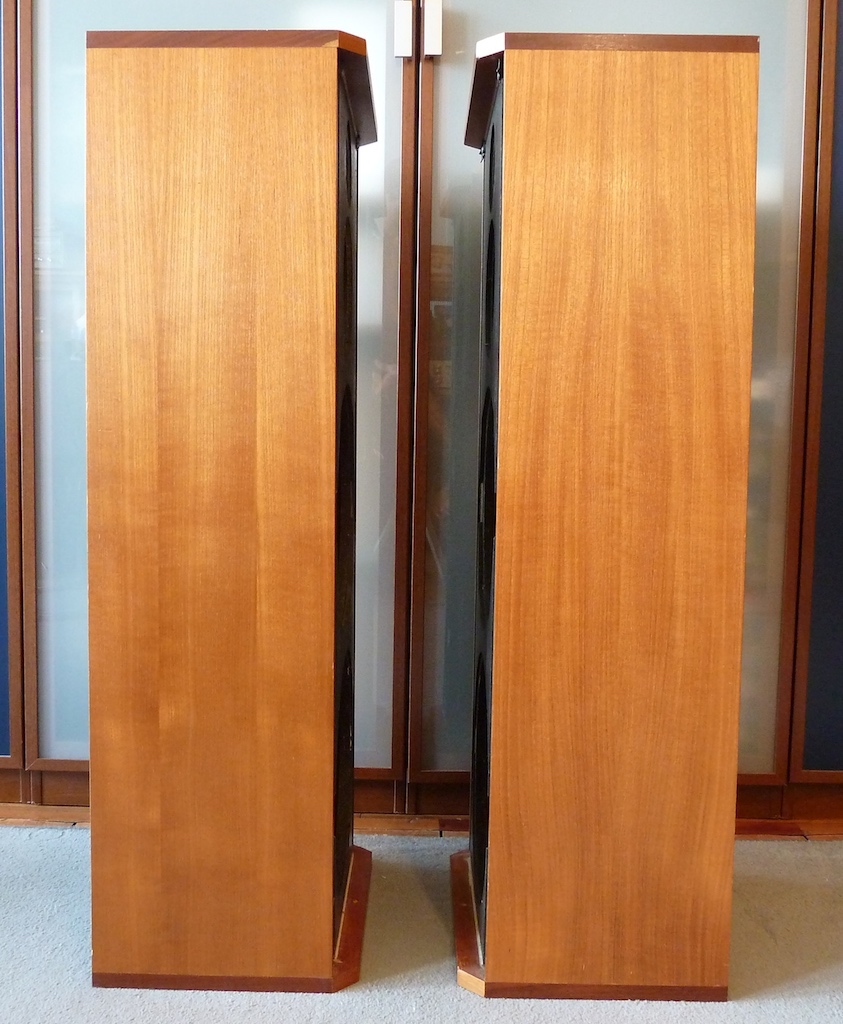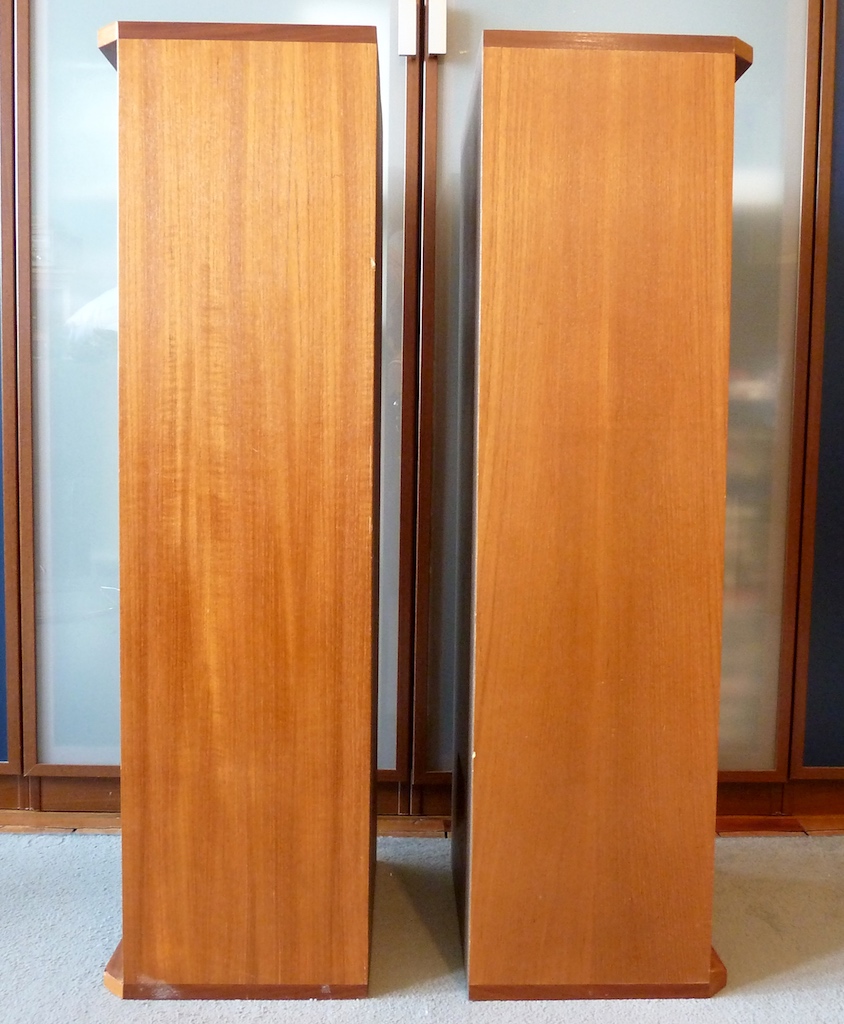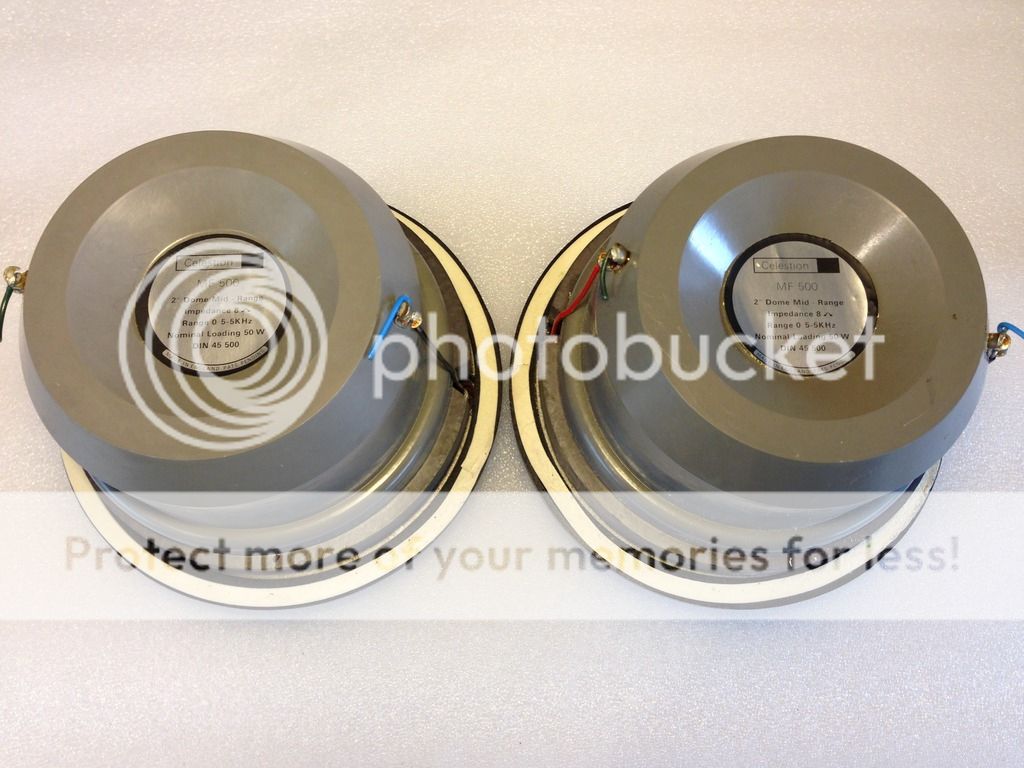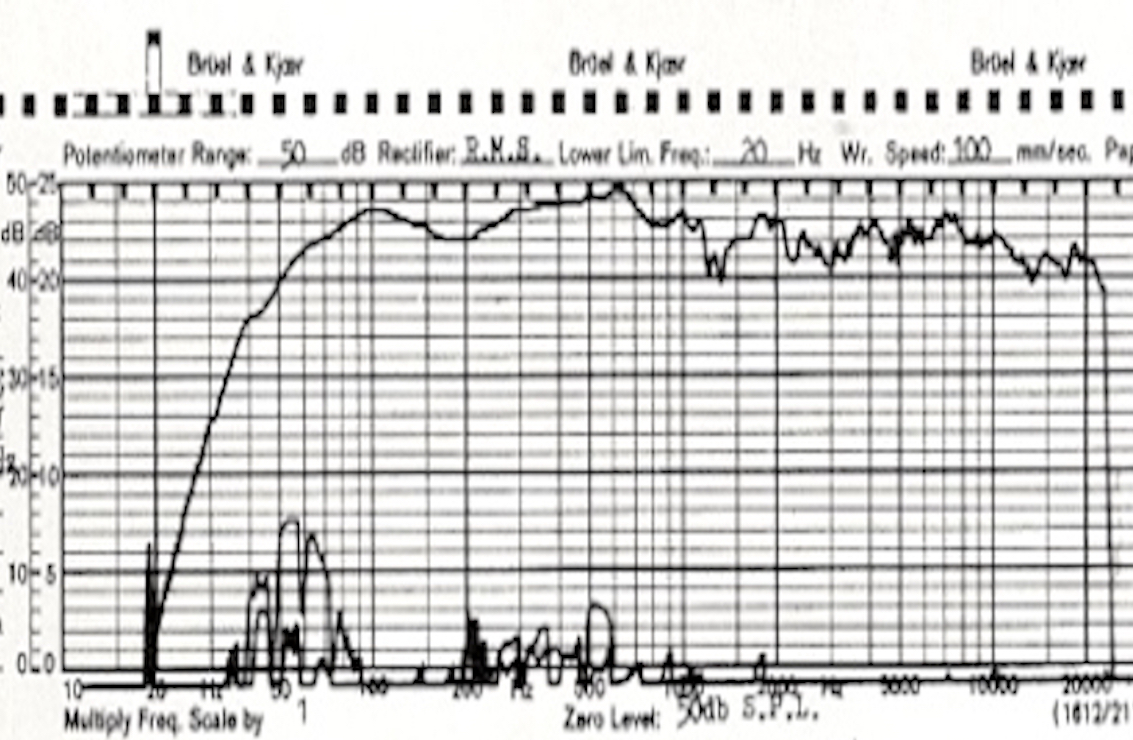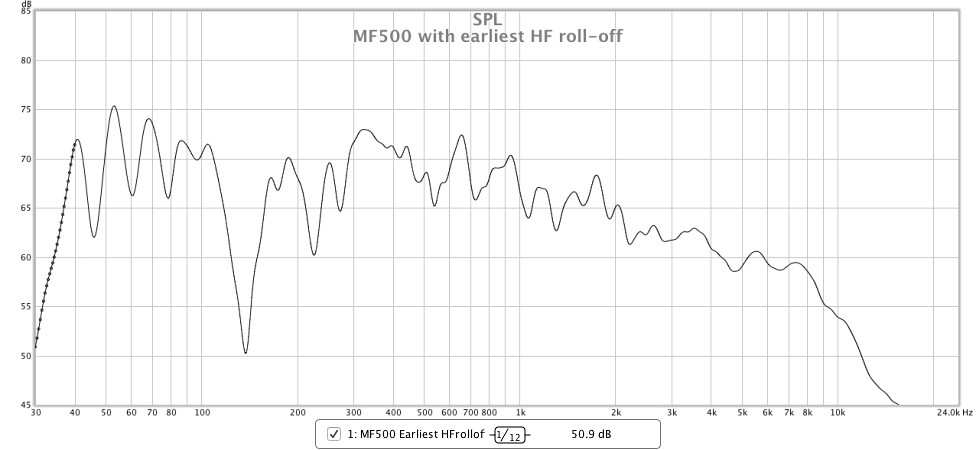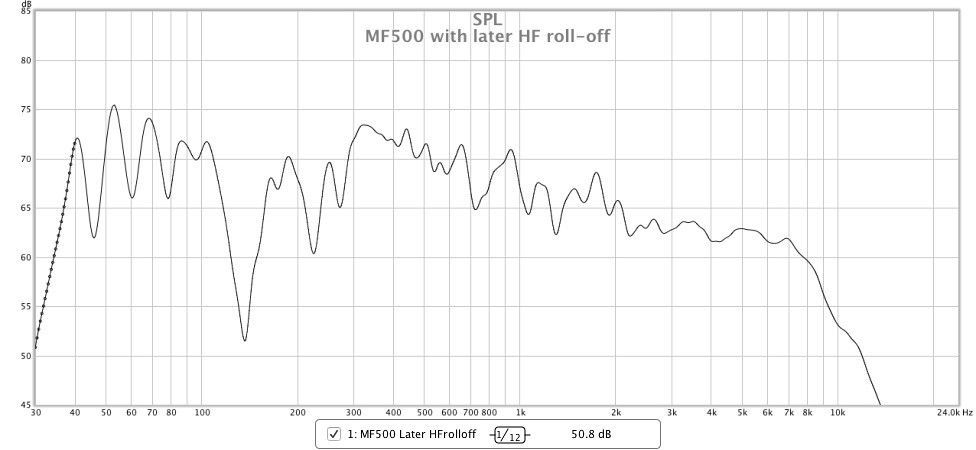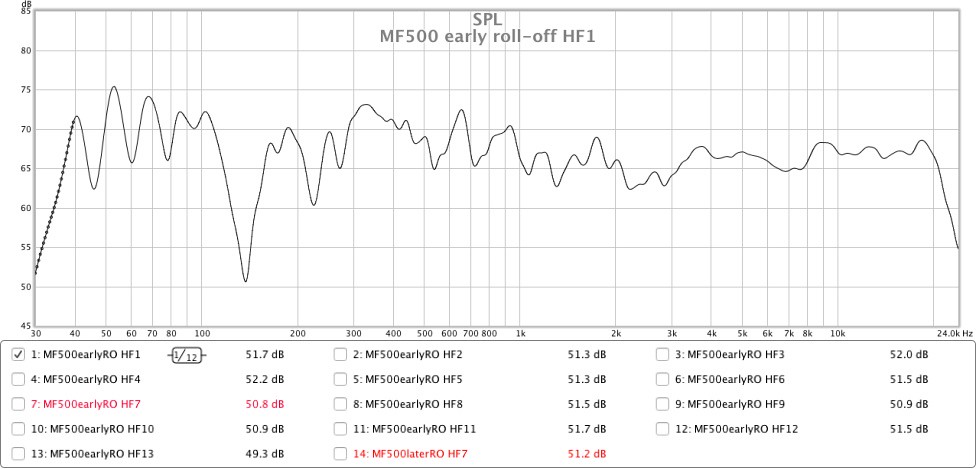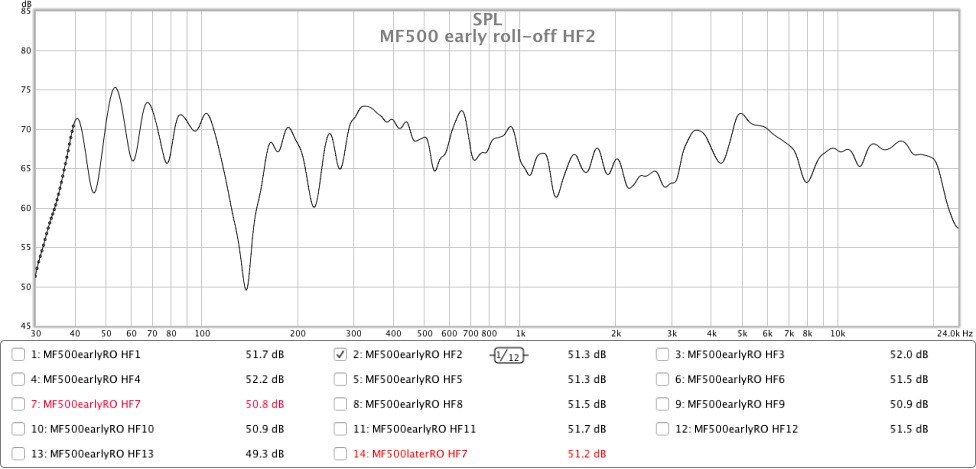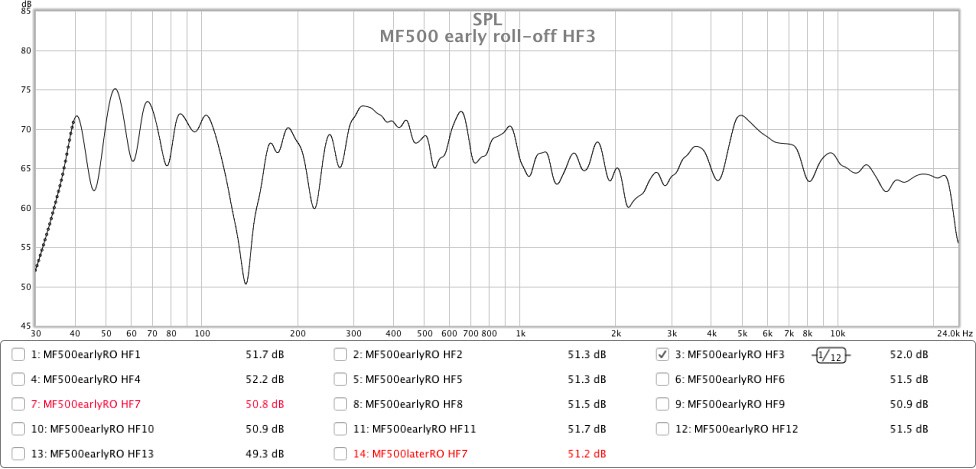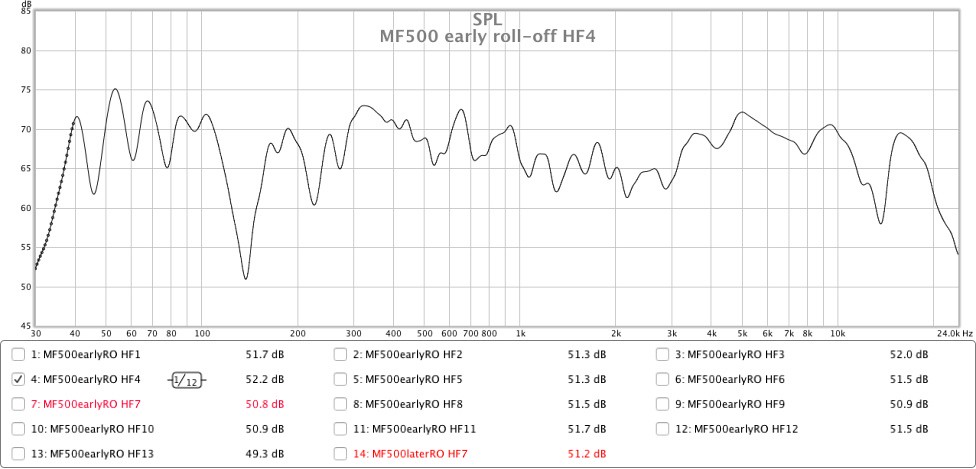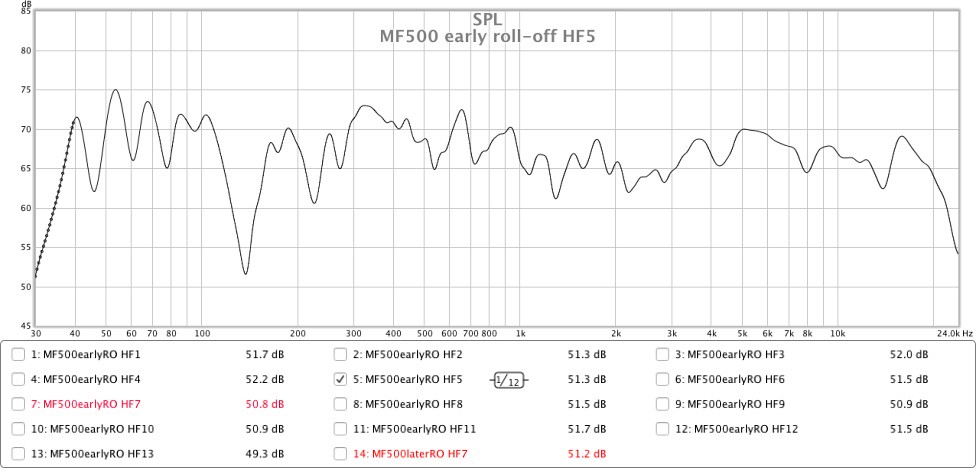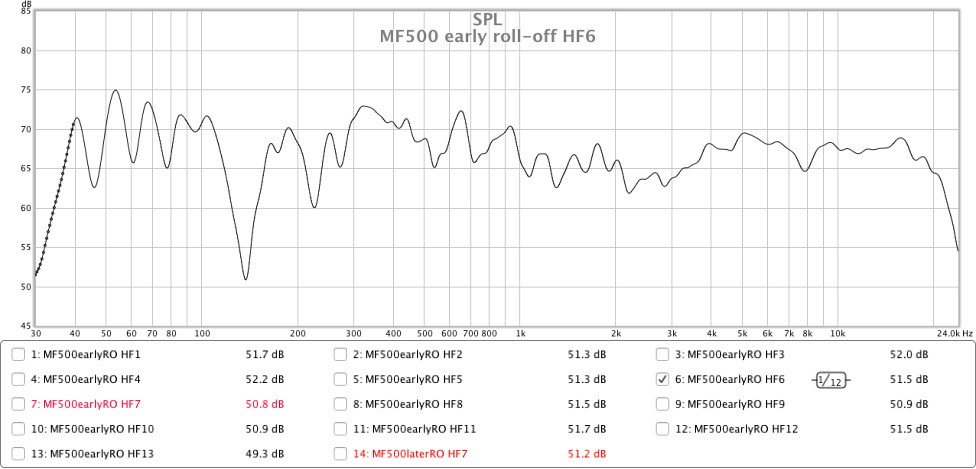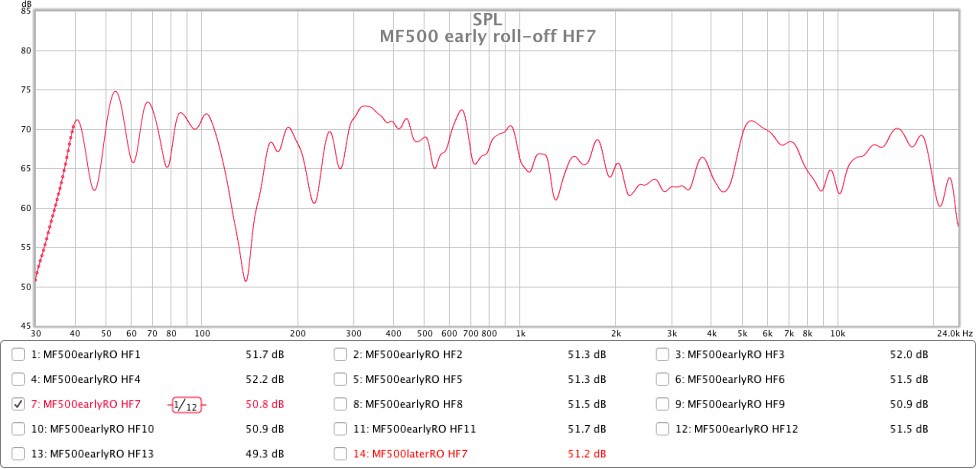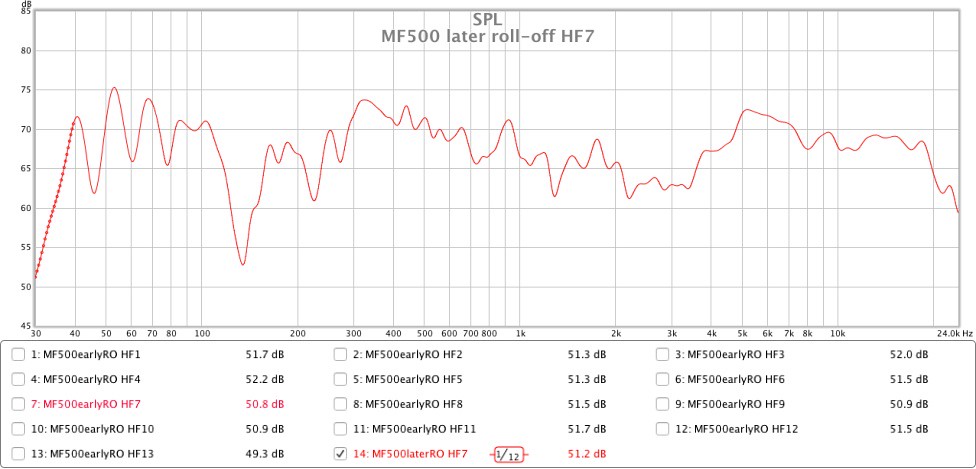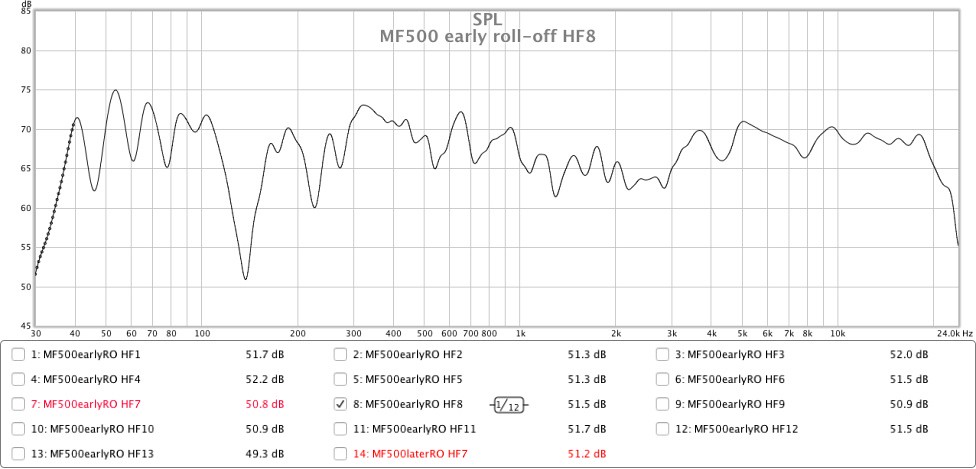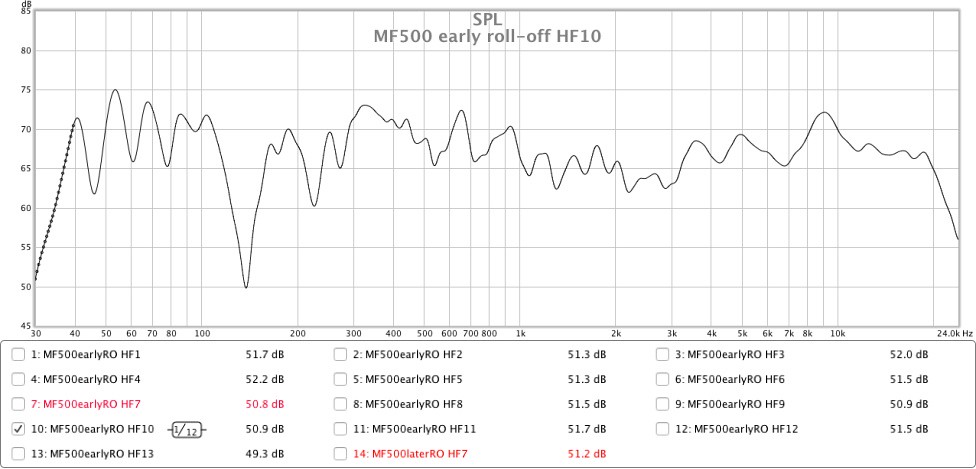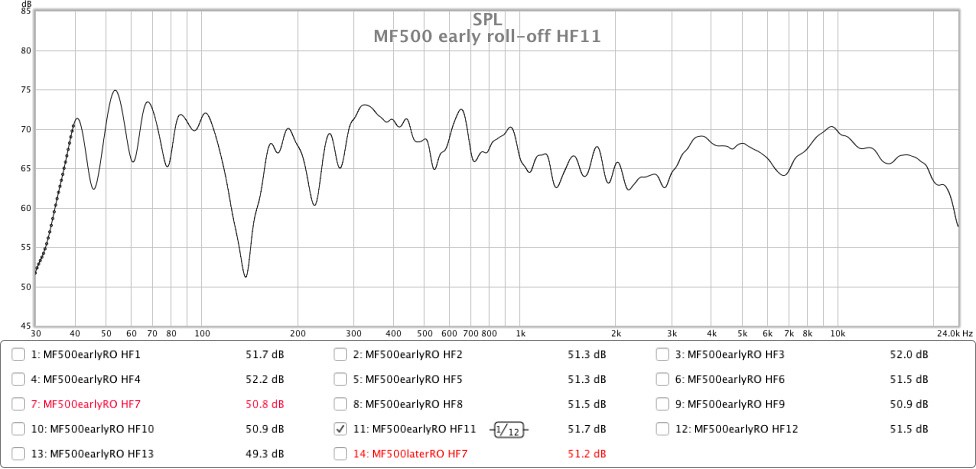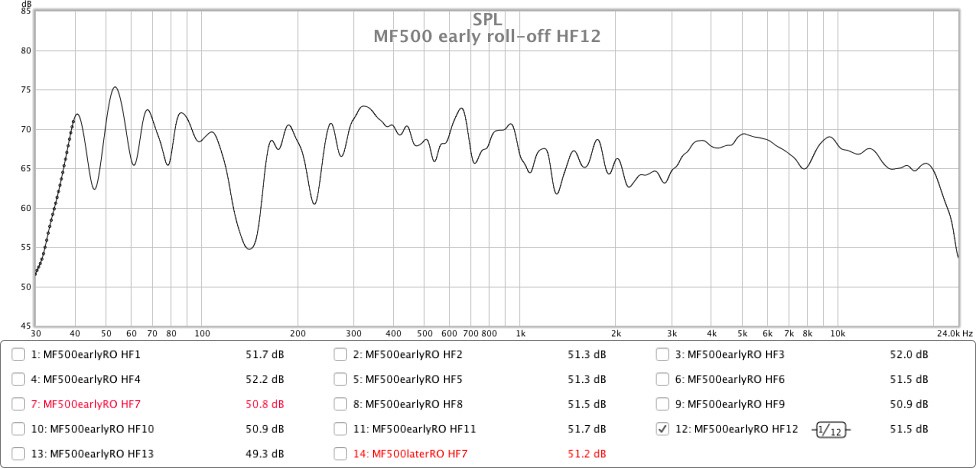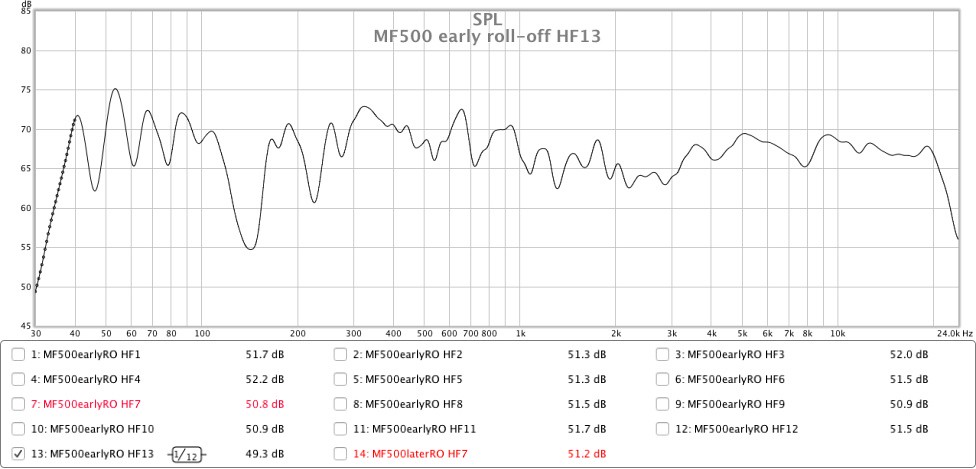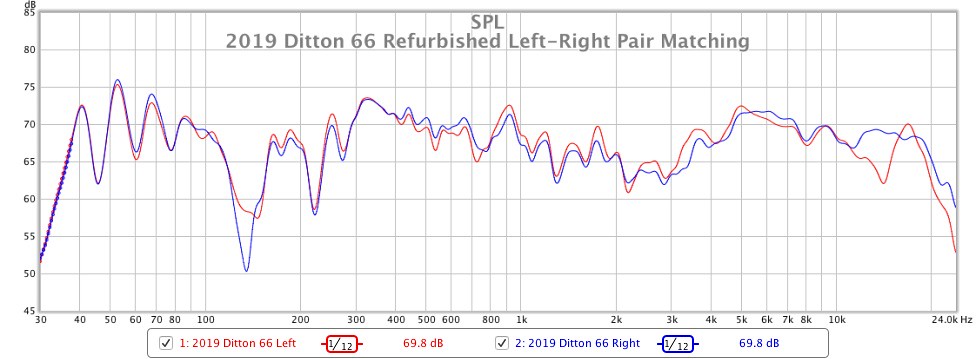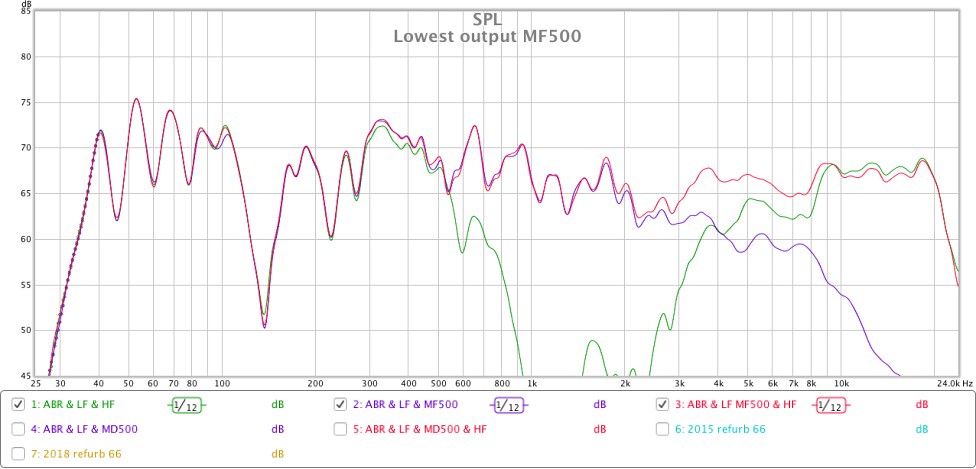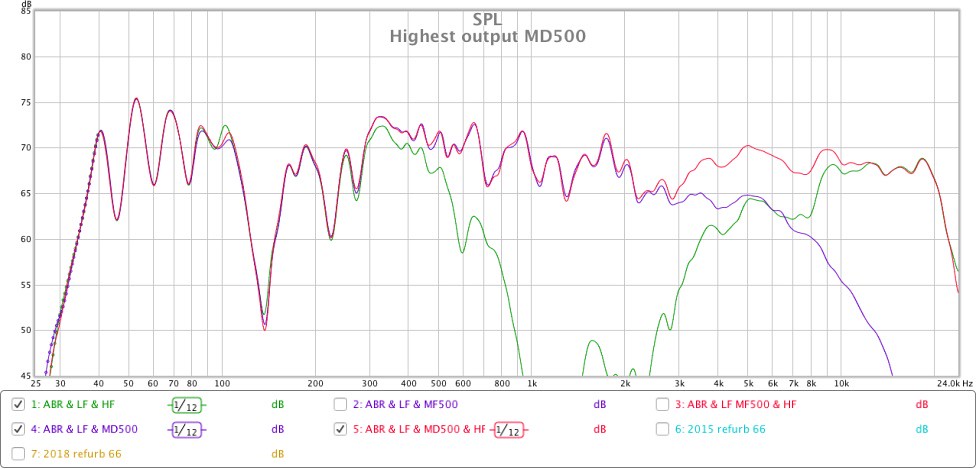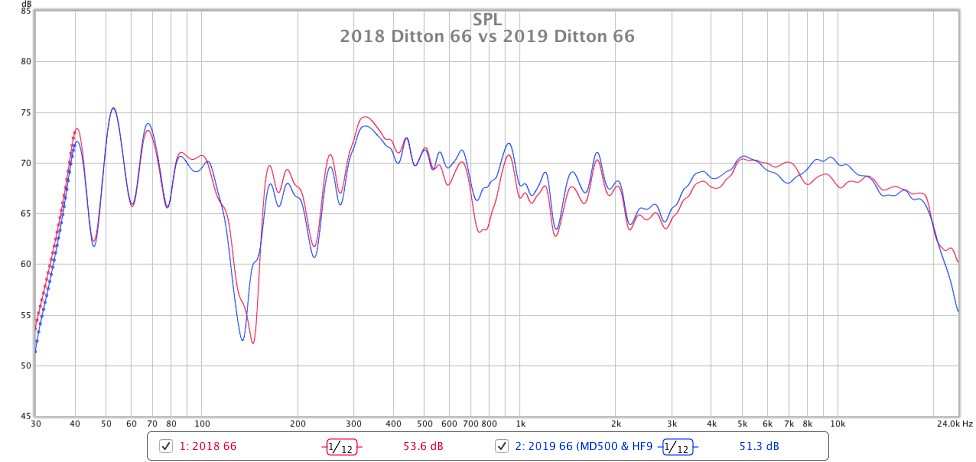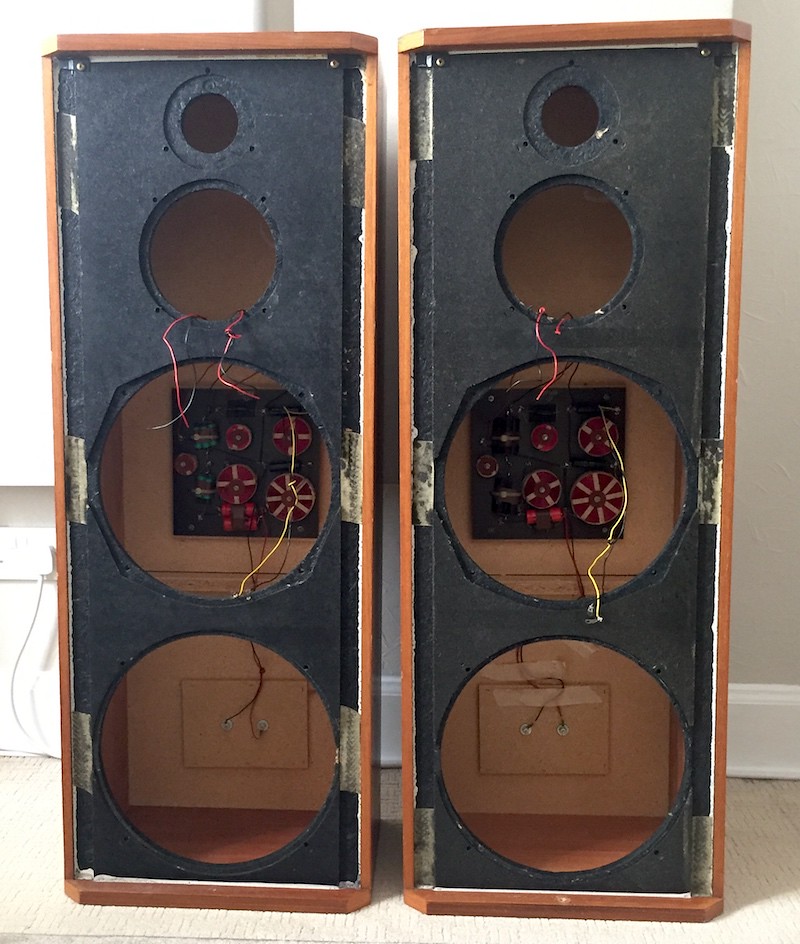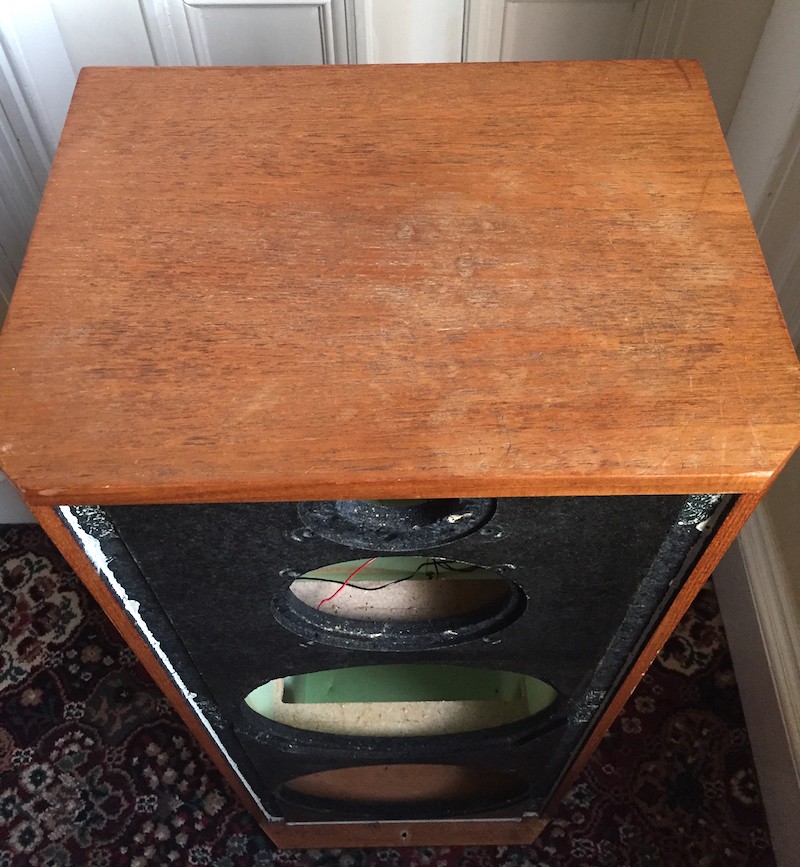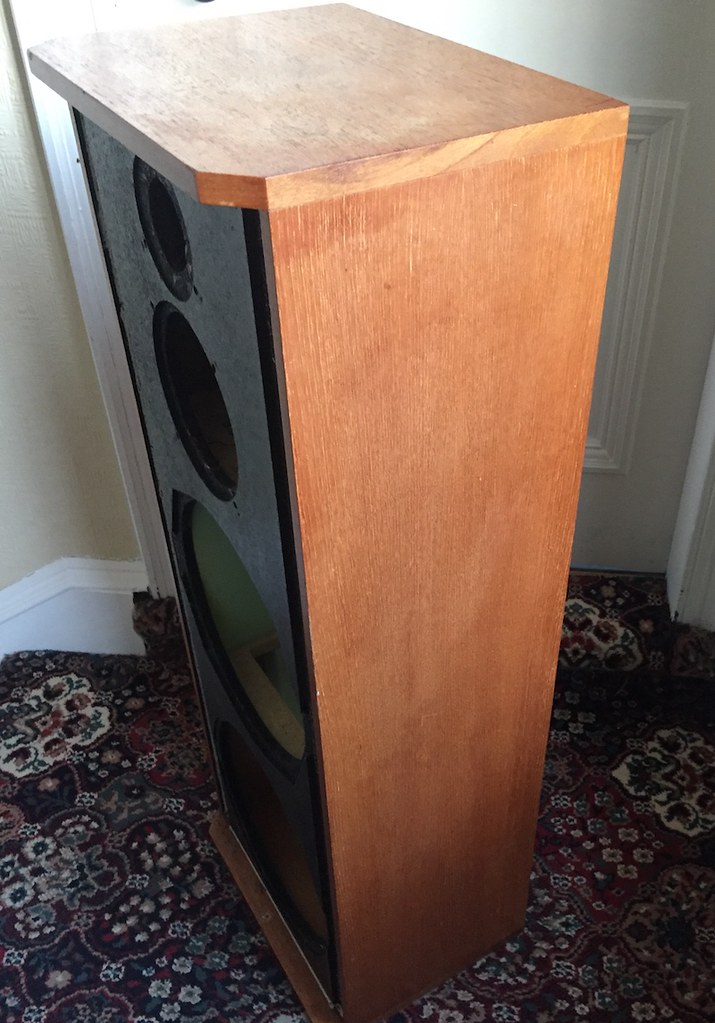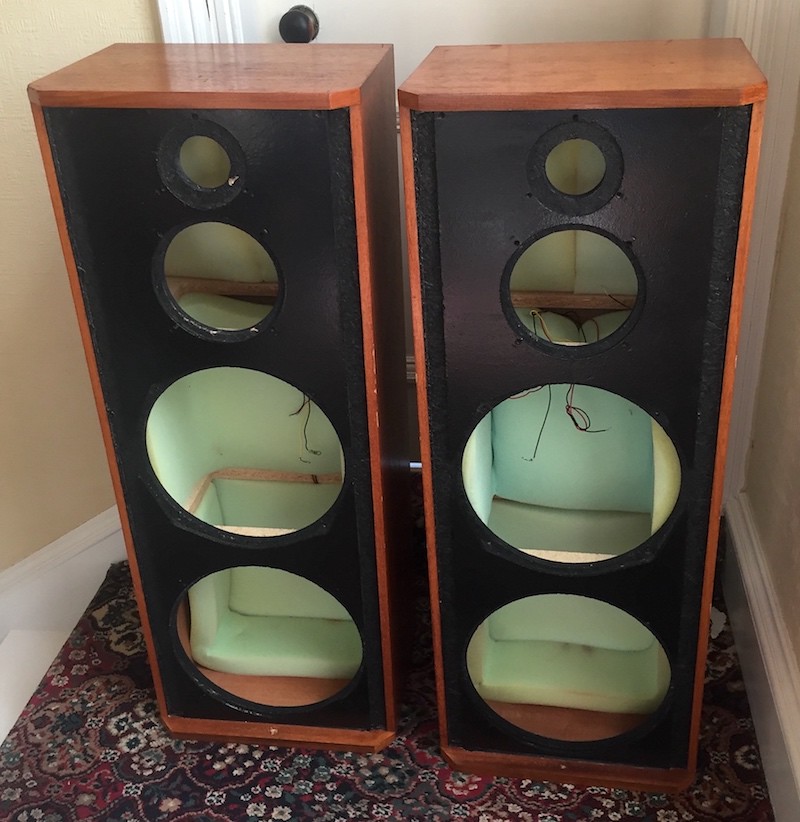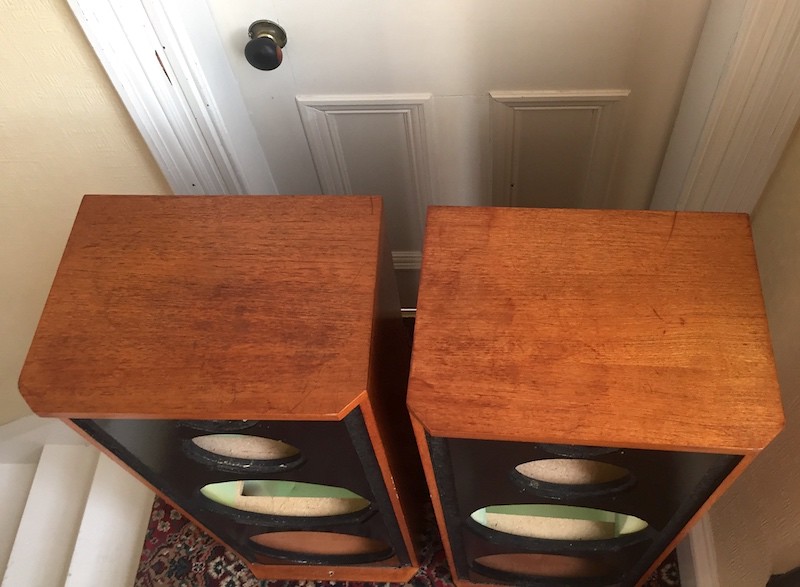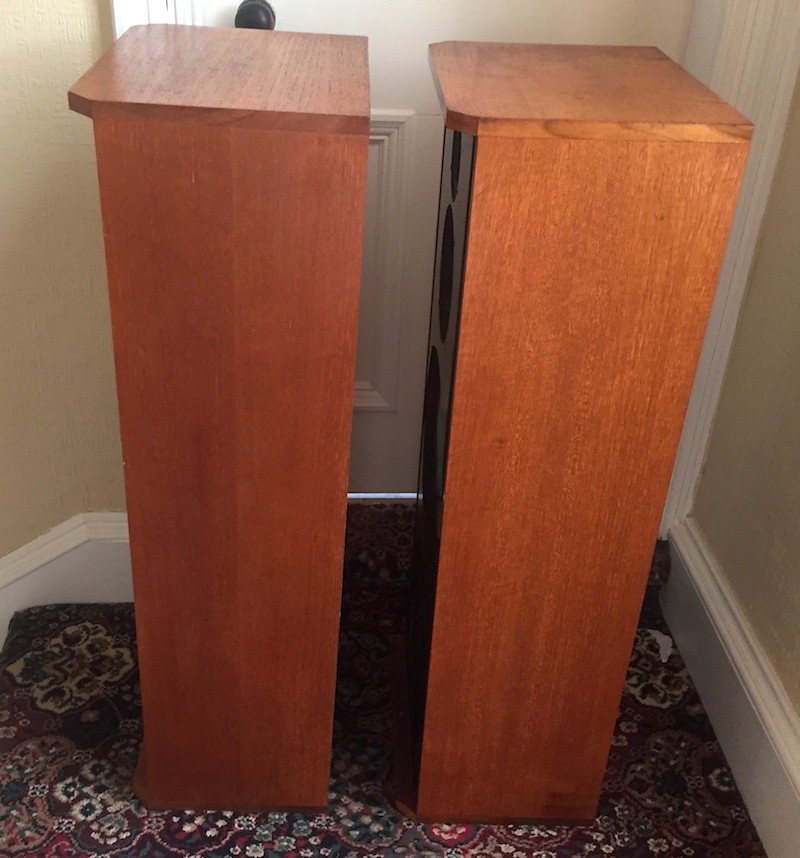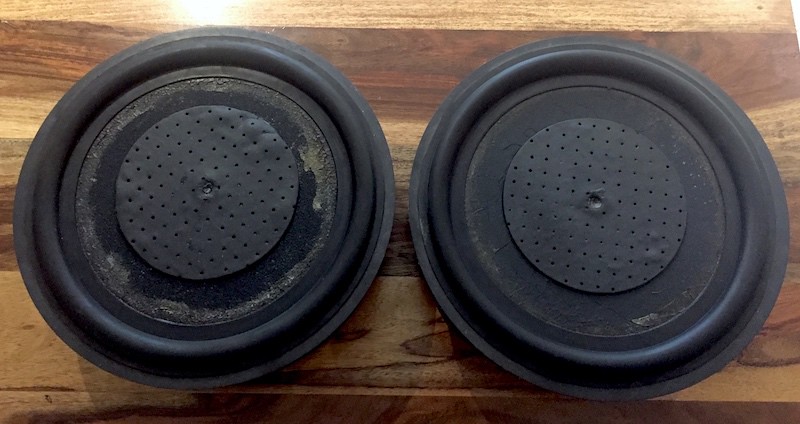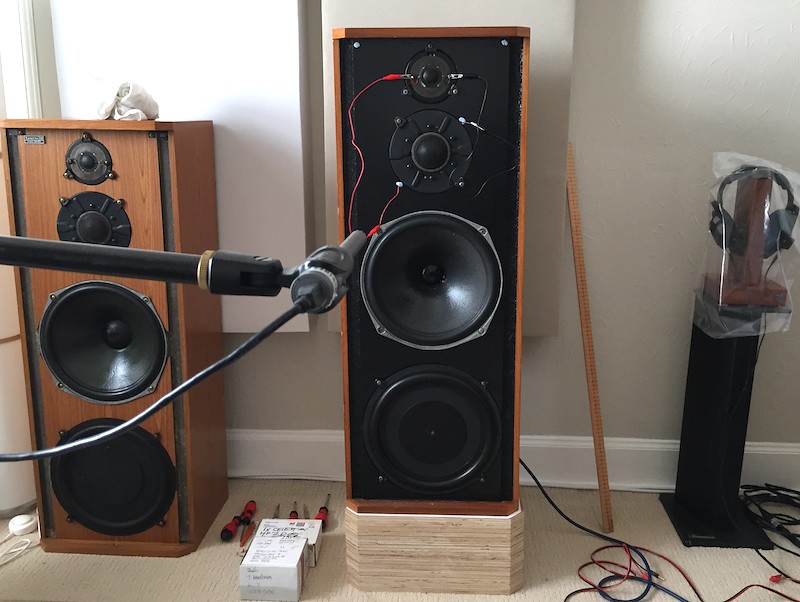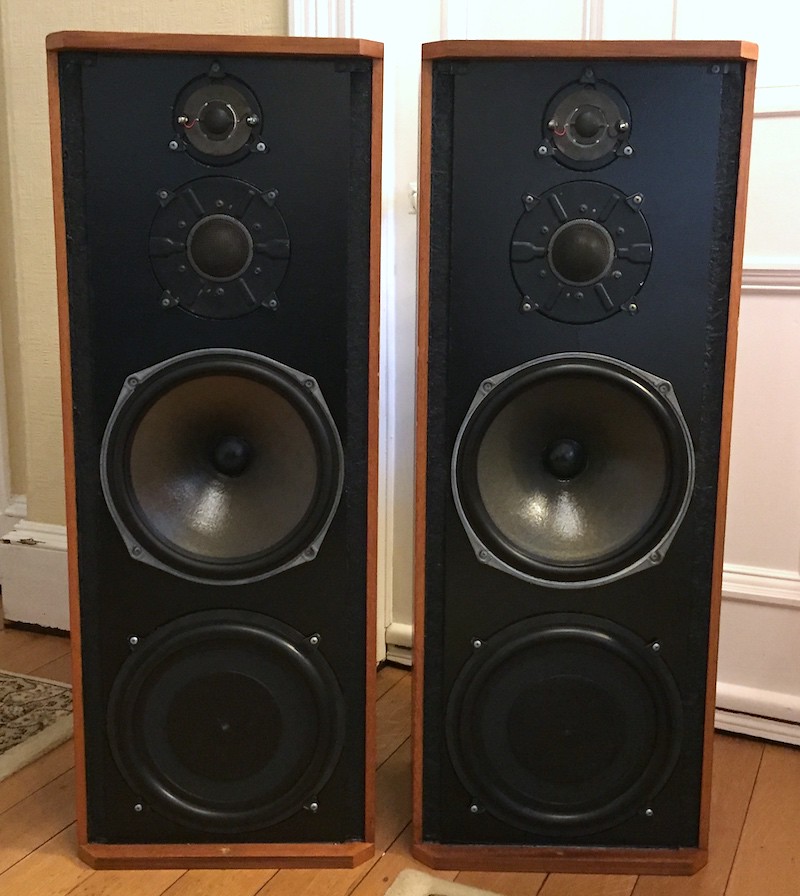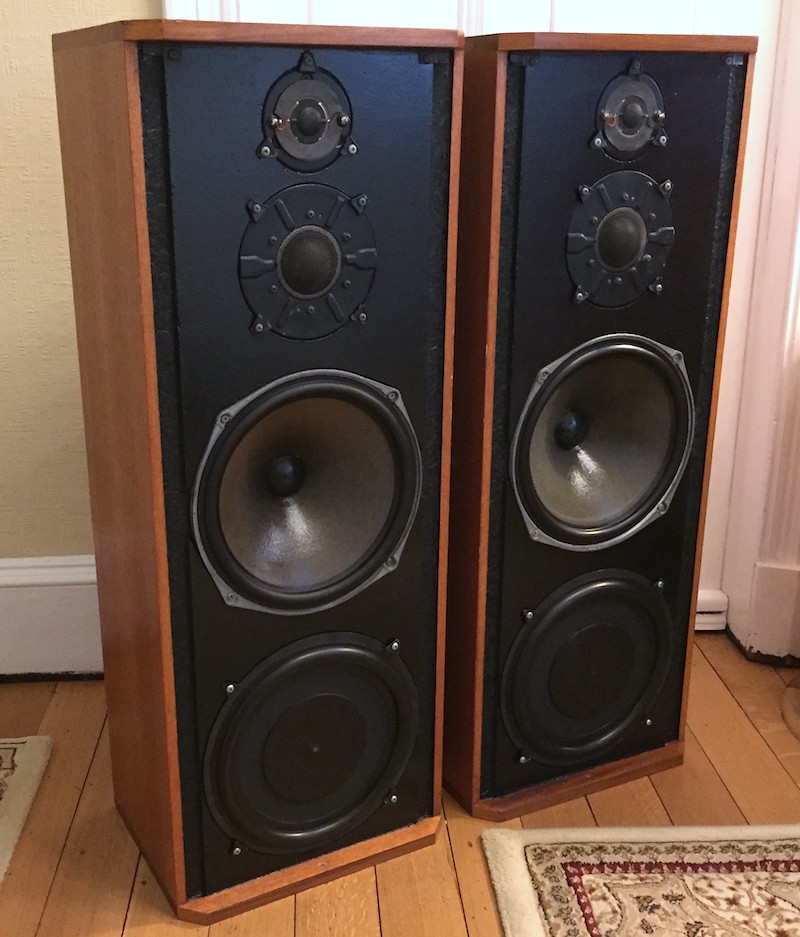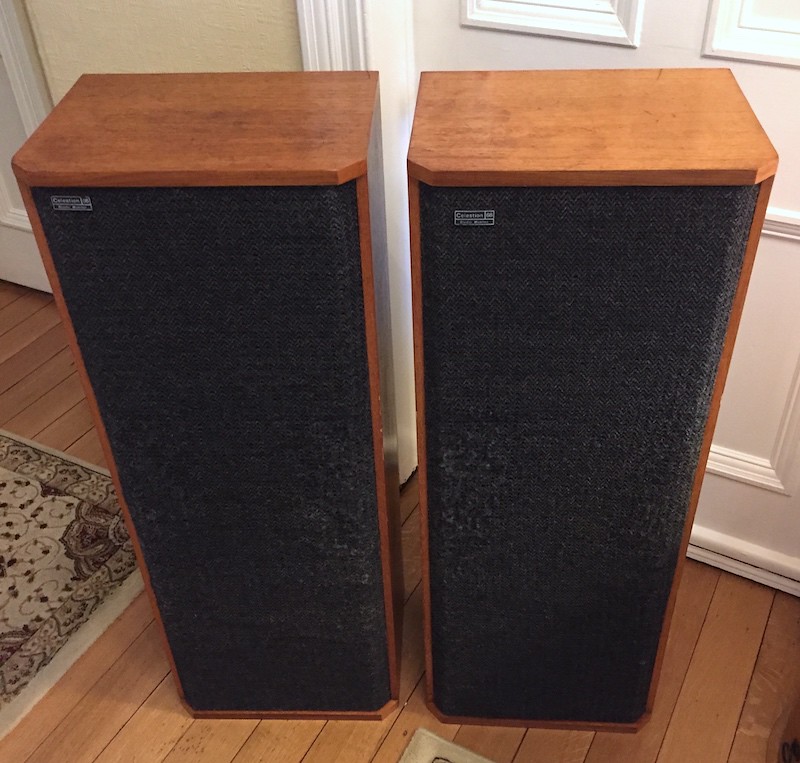ToTo Man
the band not the dog
An Epic Tale Of Two Celestion Ditton 66 Refurbishments
My latest Celestion Ditton 66 refurbishment is now complete, meaning I now own two stellar pairs of these majestical loudspeakers. I am documenting the refurbishments in this thread as a resource to assist others.
What follows is a summary of the issues these speakers had prior to the refurbishment and what the refurbishment entailed.
2018 Ditton 66 pre-refurbishment nearfield:
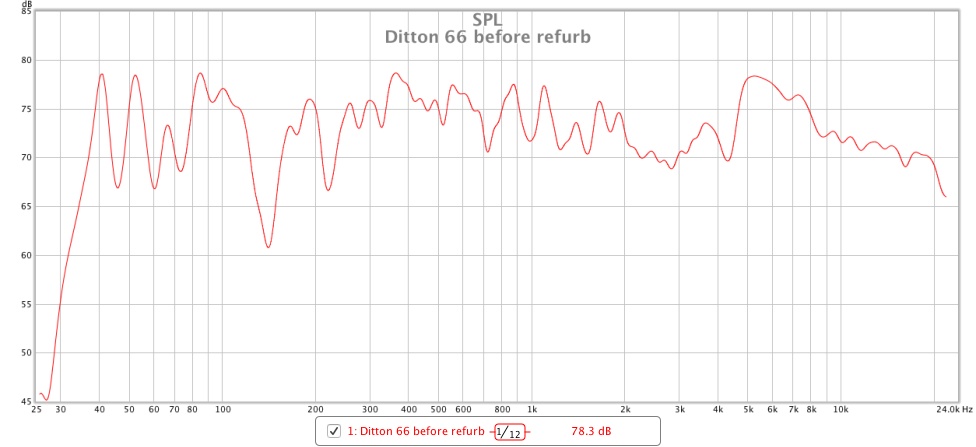
Issues identified through listening and confirmed by measurements:
2018 Ditton 66 refurbishment process:
1) Drivers:
- 1a) Remove all drive units and measure in free space with sine sweeps to check frequency response and distortion.
- 1b) Source replacement T2619 bass units, MD500 mids and HF2000 tweeters, measure and pair-match to be as close +/- dB tolerance as possible.
The original drive units measured as follows:
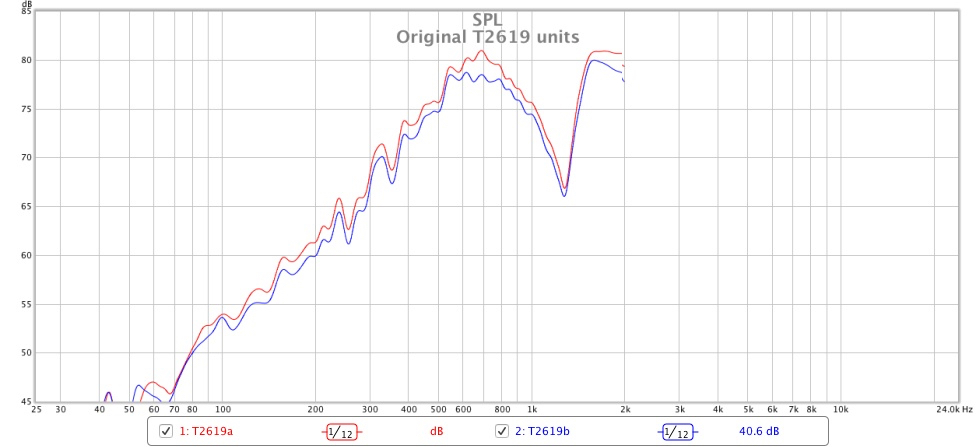
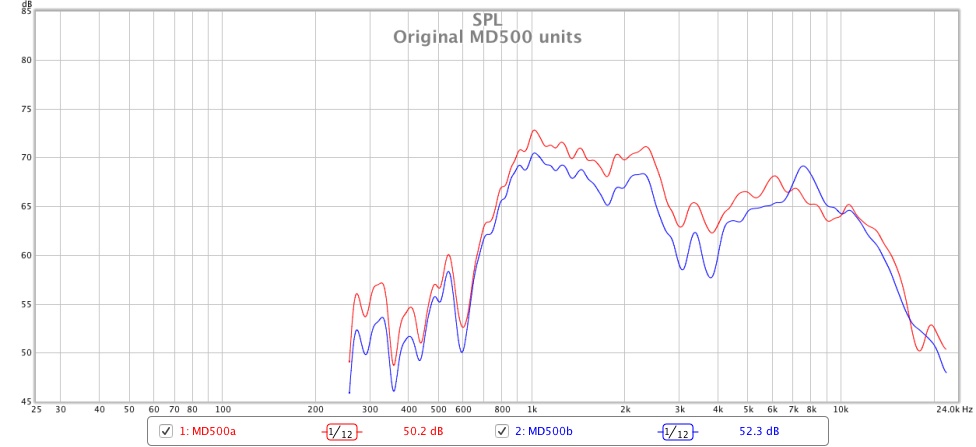
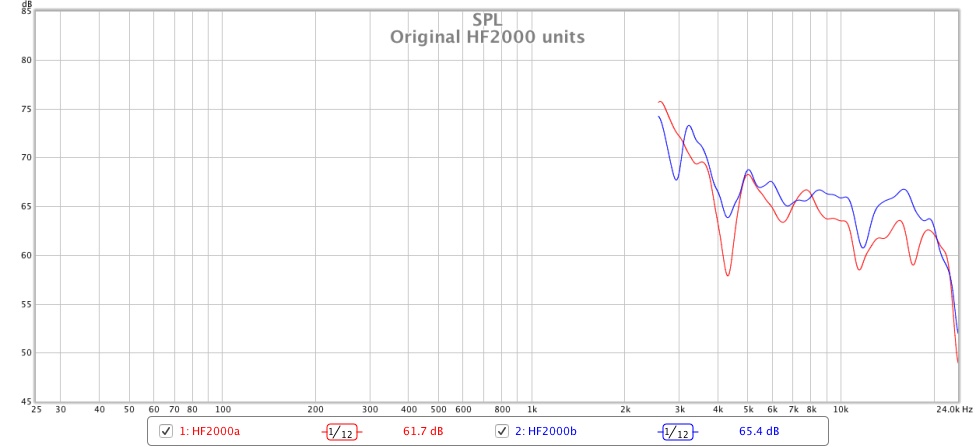
The new drive units I selected to replace the original units measure as follows:
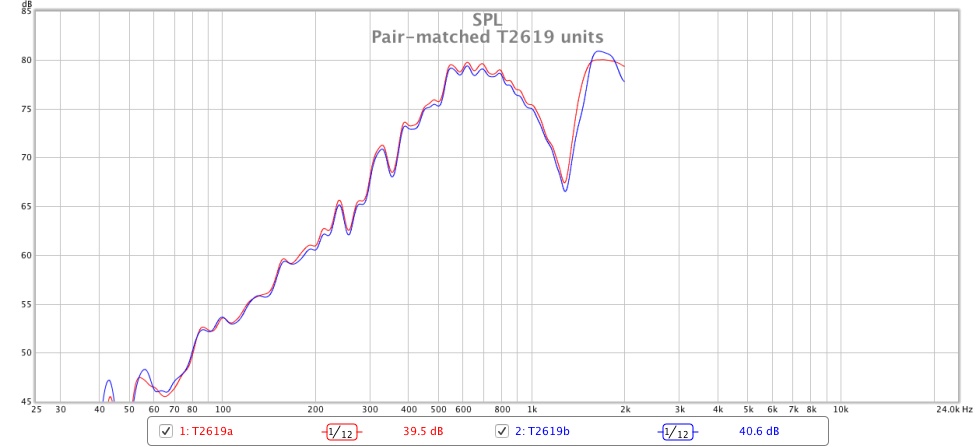
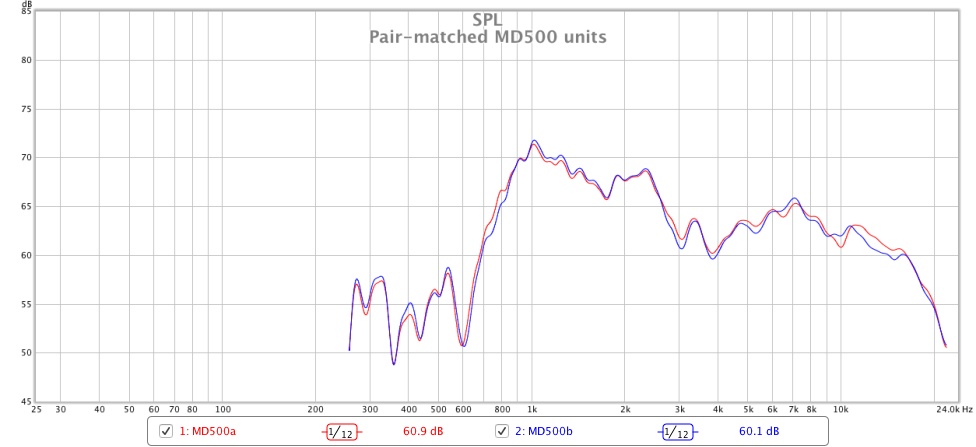
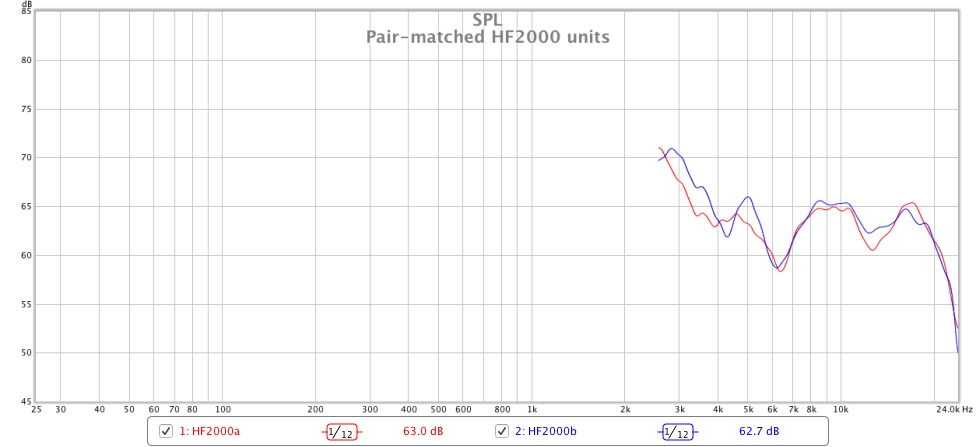
2) Crossovers:
- 2a) Replace original jump wires on TBC crossovers with solid core 1mm PCOCC.
- 2b) Replace original hookup wires with Van Damme Studio Blue 1.5mm.
- 2c) Replace original capacitors with like-for-like equivalents selected to preserve the original voicing. Measure capacitance on DVM and pair-match caps between crossovers. Measurements revealed all electrolytics to be around 4% higher than printed value, polys were +/- 1%. Printed cap values used as follows: 72uf Alcaps in LF and 4uf Alcap in MF shunt positions, 22uf Mundorf ECap + 1uf Ansar Supersound in MF circuit, 4uf and 6.2uf Ansar Supersound in HF circuit.
3) Binding posts:
- Replace original binding posts with 4mm 5-way gold-plated solid brass posts.
4) Damping:
- Replace original but mismatched open-cell foam damping with other original but matched open-cell foam damping. (I discovered one cabinet contained 40mm thick foam but the other cabinet contained a mixture of 40mm and 52mm. I’m not sure why, but perhaps thicker damping was used to compensate for one bass driver being louder than the other? I replaced everything with 40mm thickness, pilfered from another pair of Ditton 66 enclosures!
5) Test and listen:
- I allowed the speakers to burn-in with pink noise for a minimum of 12 hours before I measured or performed any critical listening.
- Having owned Ditton 66 for more than a decade, I know that they are quite fussy about listening height, especially in modest-sized rooms. Unless you slouch on a beanbag or sit a considerable distance from the speakers, you simply can’t just plop them on the floor and expect a smooth response through the mids and highs. In my experience, the HF2000 should ideally be raised above ear level, otherwise you will experience a combination of comb filtering between the MD500 and HF2000 units and diffraction off the top lip of the cabinet, causing a recessed response in the upper mid and lower treble frequencies that becomes progressively worse the lower the drive units are relative to your ears and the closer your listening position is to the speakers. You can clearly see the effect in the nearfield measurements I previously took of my 2015 Ditton 66:
2015 Ditton 66 post-refurbishment nearfield at varied heights:
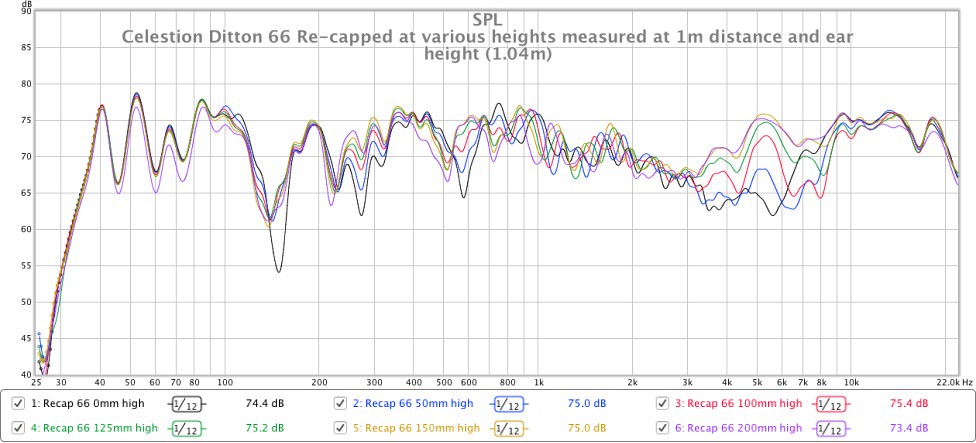
- I therefore measured each 2018 Ditton 66 loudspeaker on the 185mm high plywood plinth that I normally use when listening to the speakers, and I positioned the microphone at ear height (1.04m). This places the mic almost exactly halfway between the MD500 and HF2000 axes. I also included nearfield measurements on-axis with both the MD500 and HF2000 to re-check the effect of varying the listening height. These measurements once again confirm that it is preferable to align your ears closer to the MD500 unit than the HF2000 if you seek a more linear response:
2018 Ditton 66 post-refurbishment nearfield at varied heights:
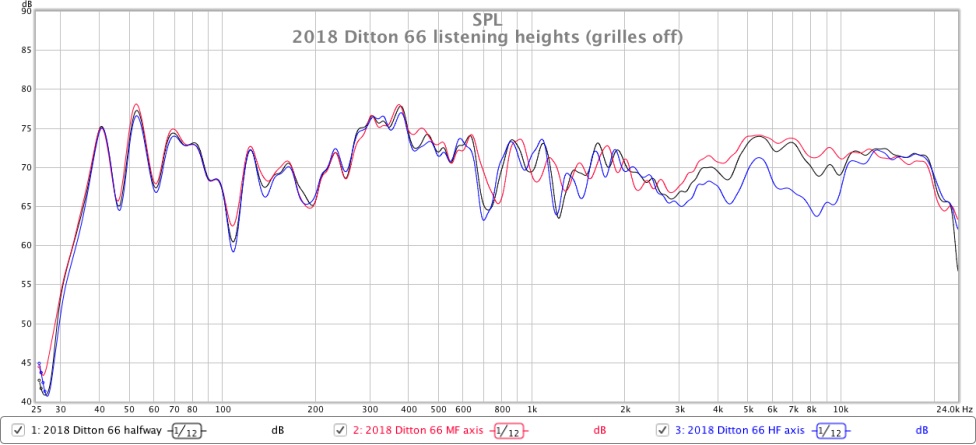
- All measurements were made with the grilles OFF. Like most vintage loudspeakers, the Ditton 66 I presume was designed to be used with the grille on. However, unlike typical wood-frame cloth grilles that usually have a very even and subtle dampening effect on the high frequencies, the Ditton 66 grille is a heavy, fabric-clad metal grid with a rectangular cutout for the HF2000. It effects a significant change in the output above 3kHz, and the change is not entirely even across the frequencies. I was particularly concerned about the grille causing additional diffraction for the nearfield measurements, another reason why I removed it.
- The Ditton 66 was of course not designed to be a nearfield monitor, and the comb filtering between the MD500 and HF2000 becomes less of a concern as the listening distance increases. I have therefore also included farfield measurements taken at my listening position, which is just over 2 metres distance from the speakers. I toed-in the speakers so that their beam hits just behind the listening position (my listening room has been acoustically treated with absorption and I find the imaging and definition on most of my speakers is better with toe-in).
- The farfield measurements, in my opinion, provide a more realistic representation of the Ditton 66 mid and high frequency balance. Once again I have included measurements taken on-axis with both the MD500 and HF2000 to allow comparison of the effect of varying the listening height at the 1 metre nearfield distance vs the 2 metre farfield distance. The seemingly large differences you see between the left and right speakers in the low and mid frequencies in the farfield measurements should be ignored, as my room's layout/construction is asymmetric and therefore the left and right speakers are subject to a different combination of peaks and nulls.
2018 Ditton 66 post-refurbishment nearfield pair-matching:
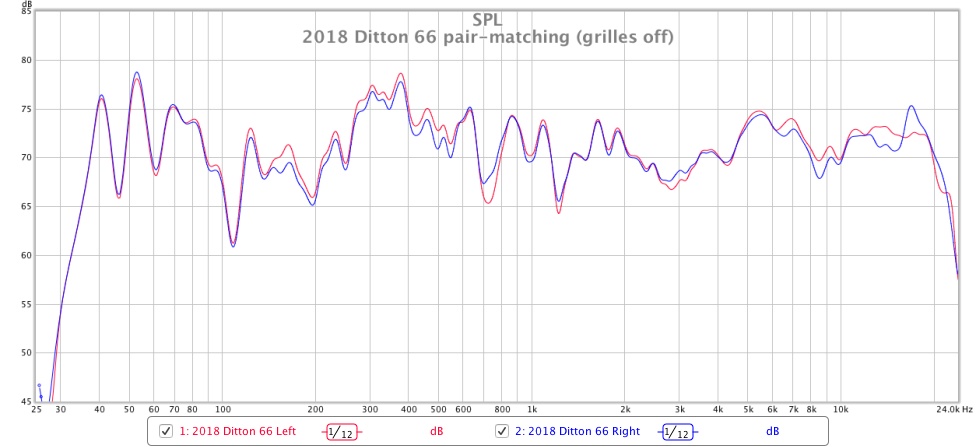
- As you can see from the nearfield measurements, pair-matching is generally excellent and there are only a few occasions where it diverges by more than 1 dB. My ears are particularly picky when it comes to channel imbalances and I cannot detect any appreciable difference between the two loudspeakers even when isolated and fed a mono signal, and that is a first! I’m pretty sure this is as good as I’ll ever get and I suspect I am probably in possession of one of the best matched pairs of Ditton 66 on the planet!
- I also repeated the measurements with the Ditton 66 I refurbished in 2015 to see how my efforts compare. (My 2015 Ditton 66 use the same model of HF2000 but earlier MF500 and T1600 drivers, and I used the exact same capacitor compliment as in my 2018 Ditton 66 with the exception of the MF circuit, where I fitted 30uf instead of 24uf):
2015 Ditton 66 post-refurbishment nearfield pair-matching:
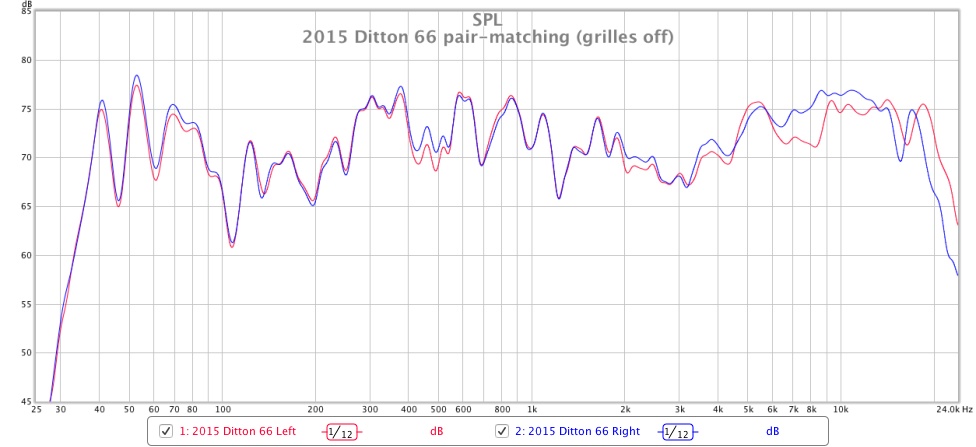
- When selecting the drive units to use in the 2015 refurbishment, I did not perform any measurements, but instead pair-matched by ear using pink noise. As you can see, I did very well with the bass and mid units but not so well with the tweeters which diverge by as much as 3.5 dBs in places above 6kHz. As I explained in an earlier thread however, I have since discovered much larger variations than this in other HF2000 units, so the pair-matching isn’t nearly as bad as it might have been. While it isn’t noticeable during normal playback, I may re-visit this at some point in the future and see if I can locate a more closely-matched pair of HF2000’s for my 2015 Ditton 66 as I do enjoy a challenge!
- I thought it would be interesting to compare and contrast the tunings of my 2015 and 2018 refurbished Ditton 66 so have overlaid the measured nearfield responses of both in the following graph:
2018 Ditton 66 post-refurbishment nearfield vs 2015 Ditton 66 post-refurbishment nearfield:
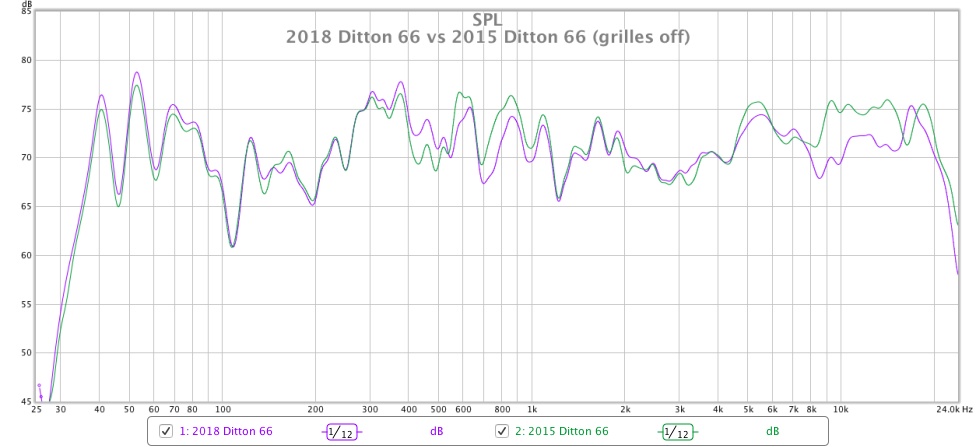
- The nearfield frequency response of the 2018 Ditton 66 is generally smoother and more neutral through the MF and HF than the 2015 Ditton 66. The 2015 Ditton 66 has a +2dB hump between 550Hz-1kHz and is +4dB hotter above 8kHz. The 2015 Ditton 66 is however more neutral between 300Hz-600Hz. Compared to the published anechoic measurements, I’d say my 2018 Ditton 66 is a closer match to stock specification:
Ditton 66 published anechoic measurements:

- As I did not take free space measurements of any of the drive units I installed in my 2015 Ditton 66, it is difficult to say whether the frequency response differences that are evident below 5kHz are due to: a) intentional design revisions to the drive units and/or crossovers, b) unavoidable intersample variations, or c) a combination of both. I think c) is the most likely explanation.
- As the HF circuits are identical in the crossovers of my 2015 and 2018 Ditton 66, I am attributing the differences in HF output above 5kHz entirely to intersample variations in the HF2000 units used. During the 2018 refurbishment I measured a total of thirteen HF2000 units to select the closest matching pair, and I found significant differences in both sensitivity and linearity by as much as 8dB is some cases (see https://farm2.staticflickr.com/1803/43444687312_1b1c515378_b.jpg). Finding a closely matched pair of HF2000’s was NOT easy!
2018 Ditton 66 post-refurbishment farfield from listening position (mic at MD500 height):
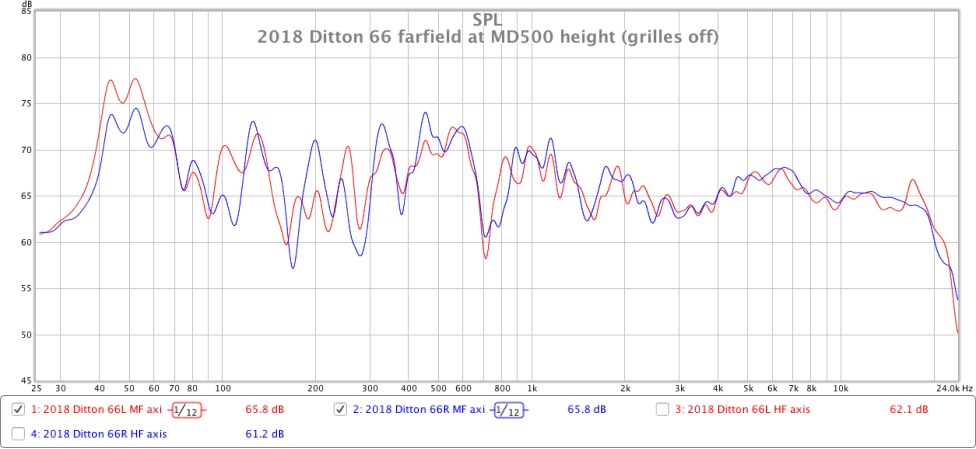
2018 Ditton 66 post-refurbishment farfield from listening position (mic at HF2000 height):
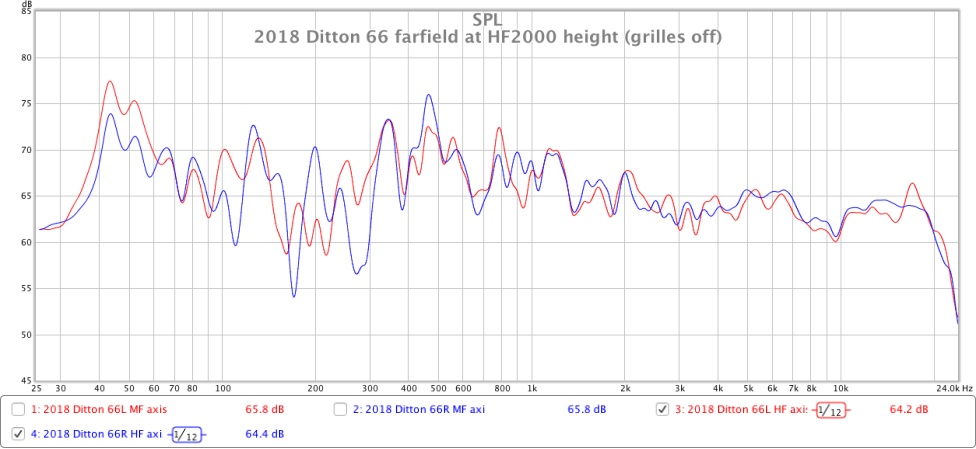
2015 Ditton 66 post-refurbishment farfield from listening position (mic at MF500 height):
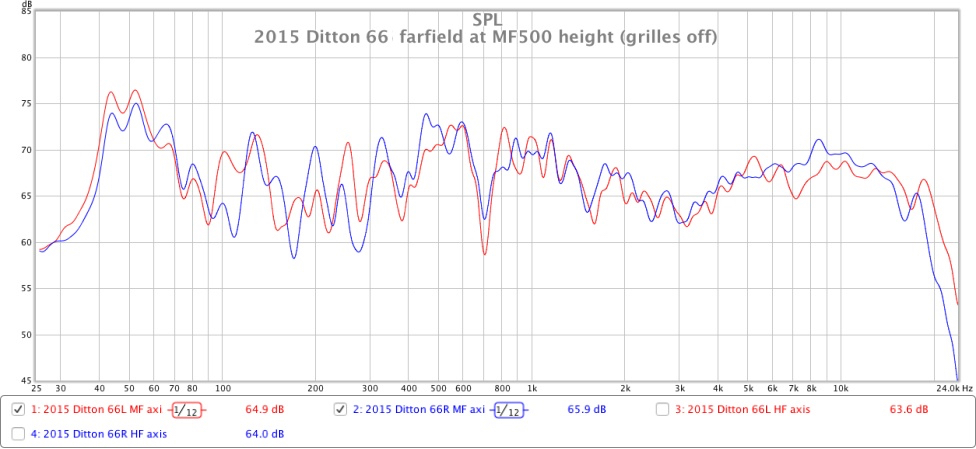
2015 Ditton 66 post-refurbishment farfield from listening position (mic at HF2000 height):
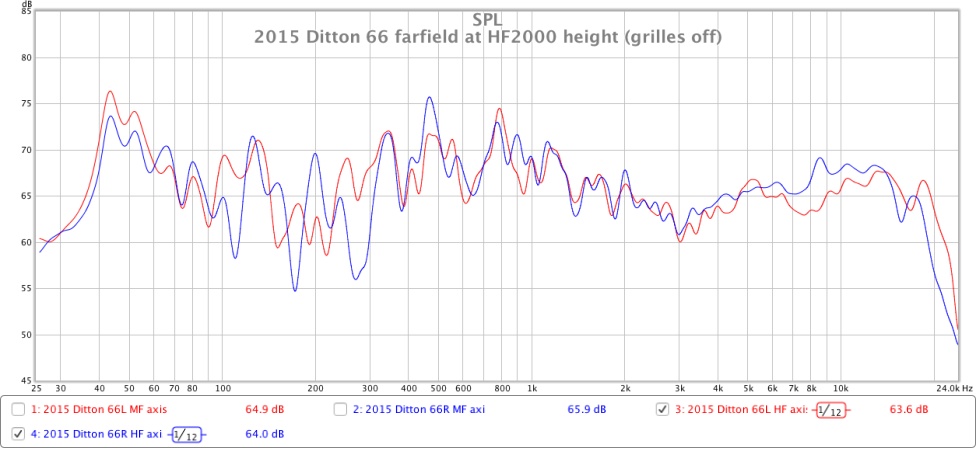
- The farfield measurements show that, as expected, the balance between the mid and high frequencies is less affected by listening height than it is for nearfield. However, to my ears, the tonal balance still sounds better when the MF unit is closer to ear level than the HF unit. The measurements reveal an undesirable null in the response at 700Hz when the mic is at the exact height of the MF unit. This is either being caused by floor-bounce or possibly cancellation between the MF and LF drivers, as the null is significantly diminished when the listening height is varied by a small amount, and it is therefore not a cause for concern IMO.
2018 Ditton 66 post-refurbishment farfield vs 2015 Ditton post-refurbishment farfield from listening position (mic at MD500/MF500 height):
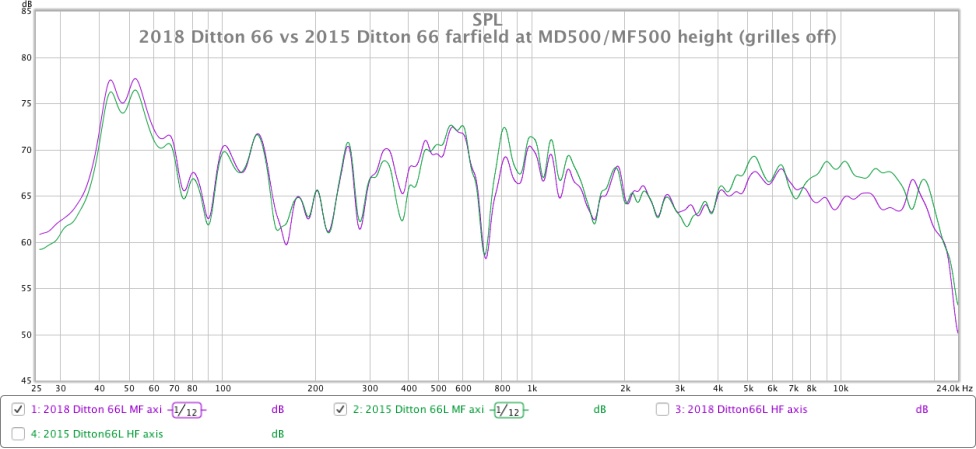
2018 Ditton 66 post-refurbishment farfield vs 2015 Ditton post-refurbishment farfield from listening position (mic at HF2000 height):
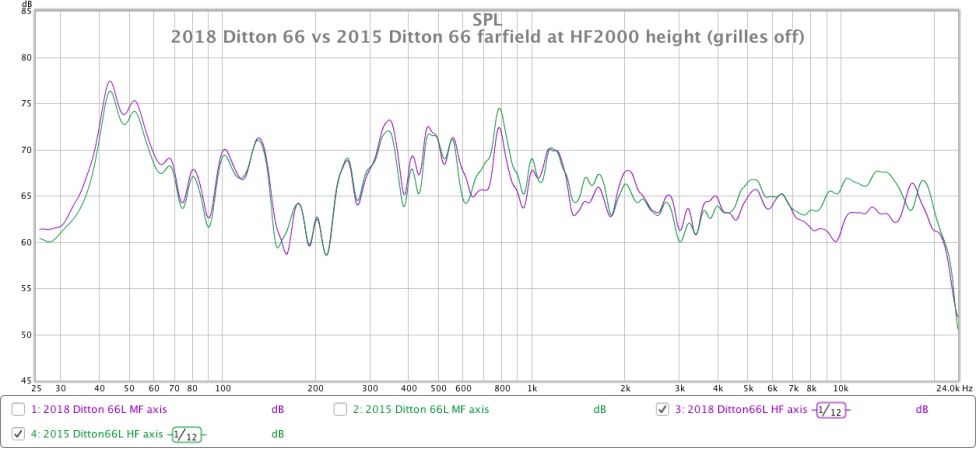
- Ignoring the measurements for a moment, and commenting instead on my subjective listening with both speakers, I feel that both the 2018 and 2015 Ditton 66 benefit from some EQ to reduce the output of the lower mid frequencies. I appreciate that it is part of the tuning or ‘character’ of the 66, however I feel the elevated output here adds a wooly warmth that is detrimental to the overall transparency of the speaker. I find the areas requiring EQ to differ slightly between the two models, with the 2015 Ditton 66 benefitting from having the 500Hz-1.25kHz region reduced, and the 2018 Ditton 66 benefiting from extending the area of adjustment down by a couple of hundred Hz to cover 300Hz-1.25kHz.
Conclusions:
- I am delighted with how my 2018 Ditton 66 refurbishment has turned out. I best not contemplate the man-hours and expense that has gone into them, but the proof is in the measurements and listening, and it is clear to me that going the extra mile with pair-matching both the drive units and capacitors has been worth it. I don’t think I’ve heard a closer matching pair of vintage loudspeakers, and before embarking on this project I wouldn’t have thought such close convergence on 40+ year old transducers was possible.
- As for the sound, it really is quite stunning. The 2018 Ditton 66 isn’t as immediately impressive upon first audition as my 2015 Ditton 66 or other references for that matter. As a Tannoy Monitor Gold and Sennheiser HD800S user for many years, I am used to a hotter than neutral top end, so my 2018 Ditton 66 did require a brief period of acclimatisation. Once my ears adjusted to its smoother top end, it was evident that all the detail was still there in spades, it just wasn’t being etched into the soundscape quite as explicitly. I could quite happy listen to this speaker for hours without the worry of listener fatigue, and also without feeling that I’m missing out on detail. It's not often that a speaker is able to walk this proverbial tight rope without inevitably leaning to one side.
- To sum up my 2018 Ditton 66 in one sentence, I’ll simply say, “you’ll have to prise these mothers from my cold, dead hands!!!…”
My latest Celestion Ditton 66 refurbishment is now complete, meaning I now own two stellar pairs of these majestical loudspeakers. I am documenting the refurbishments in this thread as a resource to assist others.
What follows is a summary of the issues these speakers had prior to the refurbishment and what the refurbishment entailed.
2018 Ditton 66 pre-refurbishment nearfield:

Issues identified through listening and confirmed by measurements:
- Distorted midrange output and treble in one loudspeaker (measurements confirmed elevated THD levels and also a large resonance at 5kHz).
- Different midrange timbres between left and right speakers (measurements confirmed different MF sensitivities and responses).
- Significant peak at 5kHz in one loudspeaker.
- Different treble timbres between left and right speakers (measurements confirmed different HF responses).
- Louder bass in one loudspeaker (measurements confirmed different LF sensitivities).
2018 Ditton 66 refurbishment process:
1) Drivers:
- 1a) Remove all drive units and measure in free space with sine sweeps to check frequency response and distortion.
- 1b) Source replacement T2619 bass units, MD500 mids and HF2000 tweeters, measure and pair-match to be as close +/- dB tolerance as possible.
The original drive units measured as follows:



The new drive units I selected to replace the original units measure as follows:



2) Crossovers:
- 2a) Replace original jump wires on TBC crossovers with solid core 1mm PCOCC.
- 2b) Replace original hookup wires with Van Damme Studio Blue 1.5mm.
- 2c) Replace original capacitors with like-for-like equivalents selected to preserve the original voicing. Measure capacitance on DVM and pair-match caps between crossovers. Measurements revealed all electrolytics to be around 4% higher than printed value, polys were +/- 1%. Printed cap values used as follows: 72uf Alcaps in LF and 4uf Alcap in MF shunt positions, 22uf Mundorf ECap + 1uf Ansar Supersound in MF circuit, 4uf and 6.2uf Ansar Supersound in HF circuit.
3) Binding posts:
- Replace original binding posts with 4mm 5-way gold-plated solid brass posts.
4) Damping:
- Replace original but mismatched open-cell foam damping with other original but matched open-cell foam damping. (I discovered one cabinet contained 40mm thick foam but the other cabinet contained a mixture of 40mm and 52mm. I’m not sure why, but perhaps thicker damping was used to compensate for one bass driver being louder than the other? I replaced everything with 40mm thickness, pilfered from another pair of Ditton 66 enclosures!
5) Test and listen:
- I allowed the speakers to burn-in with pink noise for a minimum of 12 hours before I measured or performed any critical listening.
- Having owned Ditton 66 for more than a decade, I know that they are quite fussy about listening height, especially in modest-sized rooms. Unless you slouch on a beanbag or sit a considerable distance from the speakers, you simply can’t just plop them on the floor and expect a smooth response through the mids and highs. In my experience, the HF2000 should ideally be raised above ear level, otherwise you will experience a combination of comb filtering between the MD500 and HF2000 units and diffraction off the top lip of the cabinet, causing a recessed response in the upper mid and lower treble frequencies that becomes progressively worse the lower the drive units are relative to your ears and the closer your listening position is to the speakers. You can clearly see the effect in the nearfield measurements I previously took of my 2015 Ditton 66:
2015 Ditton 66 post-refurbishment nearfield at varied heights:

- I therefore measured each 2018 Ditton 66 loudspeaker on the 185mm high plywood plinth that I normally use when listening to the speakers, and I positioned the microphone at ear height (1.04m). This places the mic almost exactly halfway between the MD500 and HF2000 axes. I also included nearfield measurements on-axis with both the MD500 and HF2000 to re-check the effect of varying the listening height. These measurements once again confirm that it is preferable to align your ears closer to the MD500 unit than the HF2000 if you seek a more linear response:
2018 Ditton 66 post-refurbishment nearfield at varied heights:

- All measurements were made with the grilles OFF. Like most vintage loudspeakers, the Ditton 66 I presume was designed to be used with the grille on. However, unlike typical wood-frame cloth grilles that usually have a very even and subtle dampening effect on the high frequencies, the Ditton 66 grille is a heavy, fabric-clad metal grid with a rectangular cutout for the HF2000. It effects a significant change in the output above 3kHz, and the change is not entirely even across the frequencies. I was particularly concerned about the grille causing additional diffraction for the nearfield measurements, another reason why I removed it.
- The Ditton 66 was of course not designed to be a nearfield monitor, and the comb filtering between the MD500 and HF2000 becomes less of a concern as the listening distance increases. I have therefore also included farfield measurements taken at my listening position, which is just over 2 metres distance from the speakers. I toed-in the speakers so that their beam hits just behind the listening position (my listening room has been acoustically treated with absorption and I find the imaging and definition on most of my speakers is better with toe-in).
- The farfield measurements, in my opinion, provide a more realistic representation of the Ditton 66 mid and high frequency balance. Once again I have included measurements taken on-axis with both the MD500 and HF2000 to allow comparison of the effect of varying the listening height at the 1 metre nearfield distance vs the 2 metre farfield distance. The seemingly large differences you see between the left and right speakers in the low and mid frequencies in the farfield measurements should be ignored, as my room's layout/construction is asymmetric and therefore the left and right speakers are subject to a different combination of peaks and nulls.
2018 Ditton 66 post-refurbishment nearfield pair-matching:

- As you can see from the nearfield measurements, pair-matching is generally excellent and there are only a few occasions where it diverges by more than 1 dB. My ears are particularly picky when it comes to channel imbalances and I cannot detect any appreciable difference between the two loudspeakers even when isolated and fed a mono signal, and that is a first! I’m pretty sure this is as good as I’ll ever get and I suspect I am probably in possession of one of the best matched pairs of Ditton 66 on the planet!
- I also repeated the measurements with the Ditton 66 I refurbished in 2015 to see how my efforts compare. (My 2015 Ditton 66 use the same model of HF2000 but earlier MF500 and T1600 drivers, and I used the exact same capacitor compliment as in my 2018 Ditton 66 with the exception of the MF circuit, where I fitted 30uf instead of 24uf):
2015 Ditton 66 post-refurbishment nearfield pair-matching:

- When selecting the drive units to use in the 2015 refurbishment, I did not perform any measurements, but instead pair-matched by ear using pink noise. As you can see, I did very well with the bass and mid units but not so well with the tweeters which diverge by as much as 3.5 dBs in places above 6kHz. As I explained in an earlier thread however, I have since discovered much larger variations than this in other HF2000 units, so the pair-matching isn’t nearly as bad as it might have been. While it isn’t noticeable during normal playback, I may re-visit this at some point in the future and see if I can locate a more closely-matched pair of HF2000’s for my 2015 Ditton 66 as I do enjoy a challenge!
- I thought it would be interesting to compare and contrast the tunings of my 2015 and 2018 refurbished Ditton 66 so have overlaid the measured nearfield responses of both in the following graph:
2018 Ditton 66 post-refurbishment nearfield vs 2015 Ditton 66 post-refurbishment nearfield:

- The nearfield frequency response of the 2018 Ditton 66 is generally smoother and more neutral through the MF and HF than the 2015 Ditton 66. The 2015 Ditton 66 has a +2dB hump between 550Hz-1kHz and is +4dB hotter above 8kHz. The 2015 Ditton 66 is however more neutral between 300Hz-600Hz. Compared to the published anechoic measurements, I’d say my 2018 Ditton 66 is a closer match to stock specification:
Ditton 66 published anechoic measurements:

- As I did not take free space measurements of any of the drive units I installed in my 2015 Ditton 66, it is difficult to say whether the frequency response differences that are evident below 5kHz are due to: a) intentional design revisions to the drive units and/or crossovers, b) unavoidable intersample variations, or c) a combination of both. I think c) is the most likely explanation.
- As the HF circuits are identical in the crossovers of my 2015 and 2018 Ditton 66, I am attributing the differences in HF output above 5kHz entirely to intersample variations in the HF2000 units used. During the 2018 refurbishment I measured a total of thirteen HF2000 units to select the closest matching pair, and I found significant differences in both sensitivity and linearity by as much as 8dB is some cases (see https://farm2.staticflickr.com/1803/43444687312_1b1c515378_b.jpg). Finding a closely matched pair of HF2000’s was NOT easy!
2018 Ditton 66 post-refurbishment farfield from listening position (mic at MD500 height):

2018 Ditton 66 post-refurbishment farfield from listening position (mic at HF2000 height):

2015 Ditton 66 post-refurbishment farfield from listening position (mic at MF500 height):

2015 Ditton 66 post-refurbishment farfield from listening position (mic at HF2000 height):

- The farfield measurements show that, as expected, the balance between the mid and high frequencies is less affected by listening height than it is for nearfield. However, to my ears, the tonal balance still sounds better when the MF unit is closer to ear level than the HF unit. The measurements reveal an undesirable null in the response at 700Hz when the mic is at the exact height of the MF unit. This is either being caused by floor-bounce or possibly cancellation between the MF and LF drivers, as the null is significantly diminished when the listening height is varied by a small amount, and it is therefore not a cause for concern IMO.
2018 Ditton 66 post-refurbishment farfield vs 2015 Ditton post-refurbishment farfield from listening position (mic at MD500/MF500 height):

2018 Ditton 66 post-refurbishment farfield vs 2015 Ditton post-refurbishment farfield from listening position (mic at HF2000 height):

- Ignoring the measurements for a moment, and commenting instead on my subjective listening with both speakers, I feel that both the 2018 and 2015 Ditton 66 benefit from some EQ to reduce the output of the lower mid frequencies. I appreciate that it is part of the tuning or ‘character’ of the 66, however I feel the elevated output here adds a wooly warmth that is detrimental to the overall transparency of the speaker. I find the areas requiring EQ to differ slightly between the two models, with the 2015 Ditton 66 benefitting from having the 500Hz-1.25kHz region reduced, and the 2018 Ditton 66 benefiting from extending the area of adjustment down by a couple of hundred Hz to cover 300Hz-1.25kHz.
Conclusions:
- I am delighted with how my 2018 Ditton 66 refurbishment has turned out. I best not contemplate the man-hours and expense that has gone into them, but the proof is in the measurements and listening, and it is clear to me that going the extra mile with pair-matching both the drive units and capacitors has been worth it. I don’t think I’ve heard a closer matching pair of vintage loudspeakers, and before embarking on this project I wouldn’t have thought such close convergence on 40+ year old transducers was possible.
- As for the sound, it really is quite stunning. The 2018 Ditton 66 isn’t as immediately impressive upon first audition as my 2015 Ditton 66 or other references for that matter. As a Tannoy Monitor Gold and Sennheiser HD800S user for many years, I am used to a hotter than neutral top end, so my 2018 Ditton 66 did require a brief period of acclimatisation. Once my ears adjusted to its smoother top end, it was evident that all the detail was still there in spades, it just wasn’t being etched into the soundscape quite as explicitly. I could quite happy listen to this speaker for hours without the worry of listener fatigue, and also without feeling that I’m missing out on detail. It's not often that a speaker is able to walk this proverbial tight rope without inevitably leaning to one side.
- To sum up my 2018 Ditton 66 in one sentence, I’ll simply say, “you’ll have to prise these mothers from my cold, dead hands!!!…”
Last edited:


